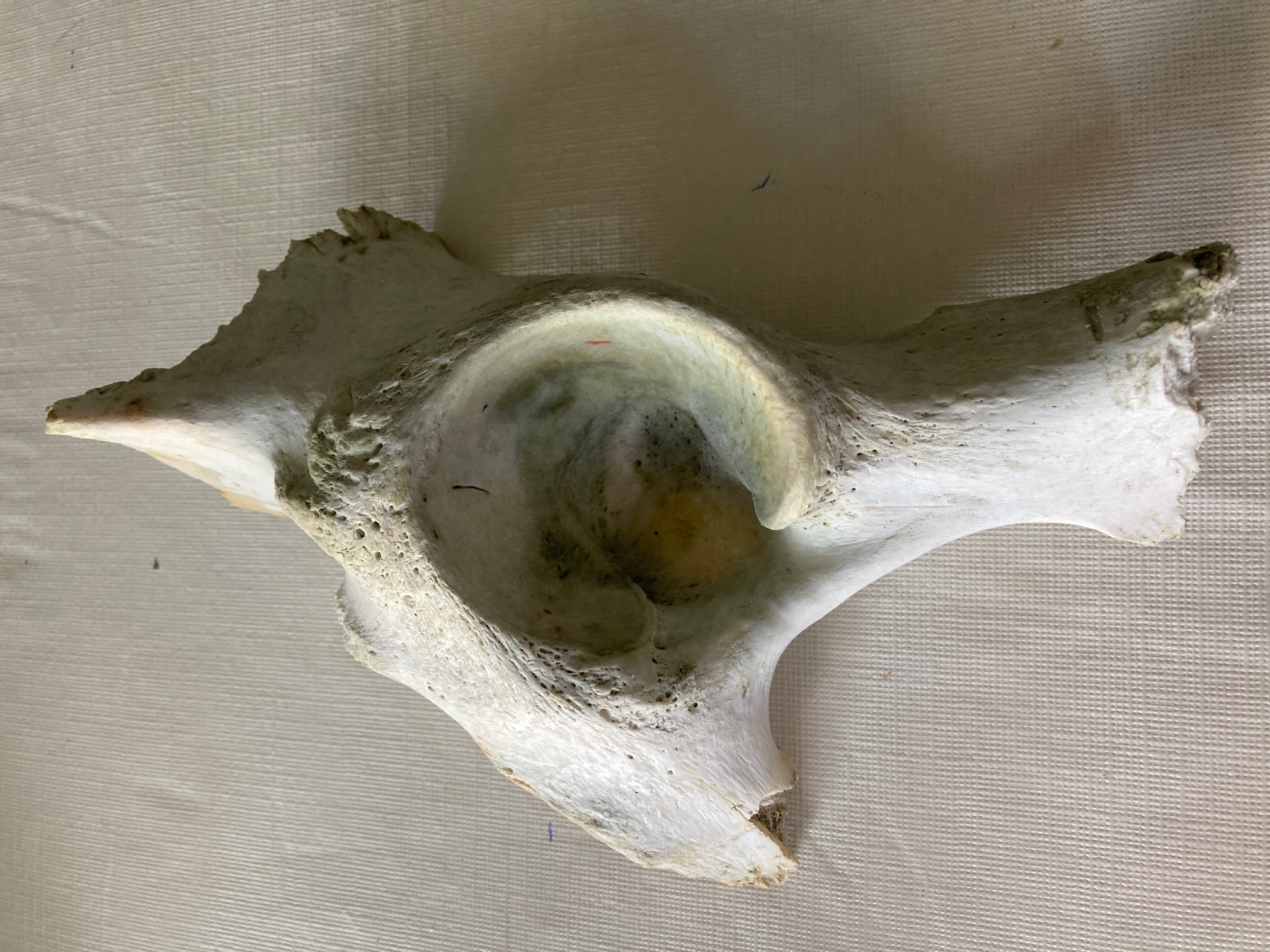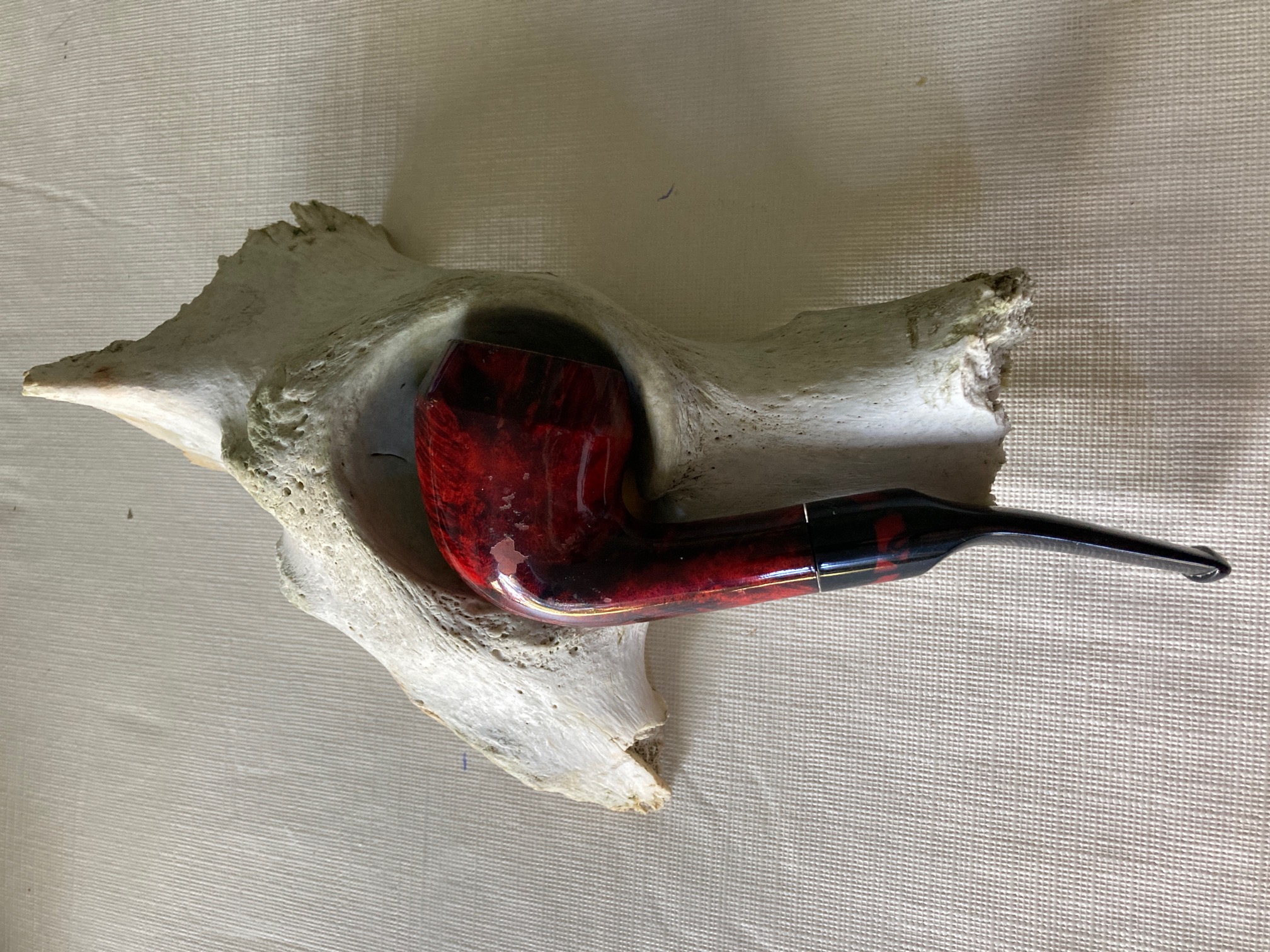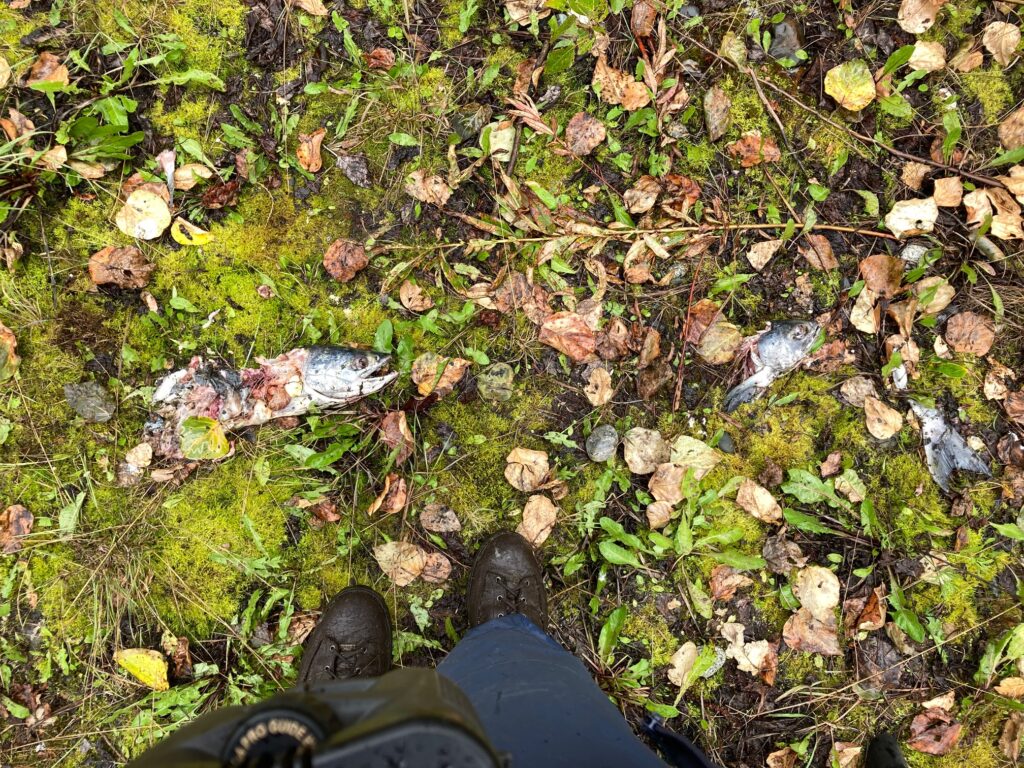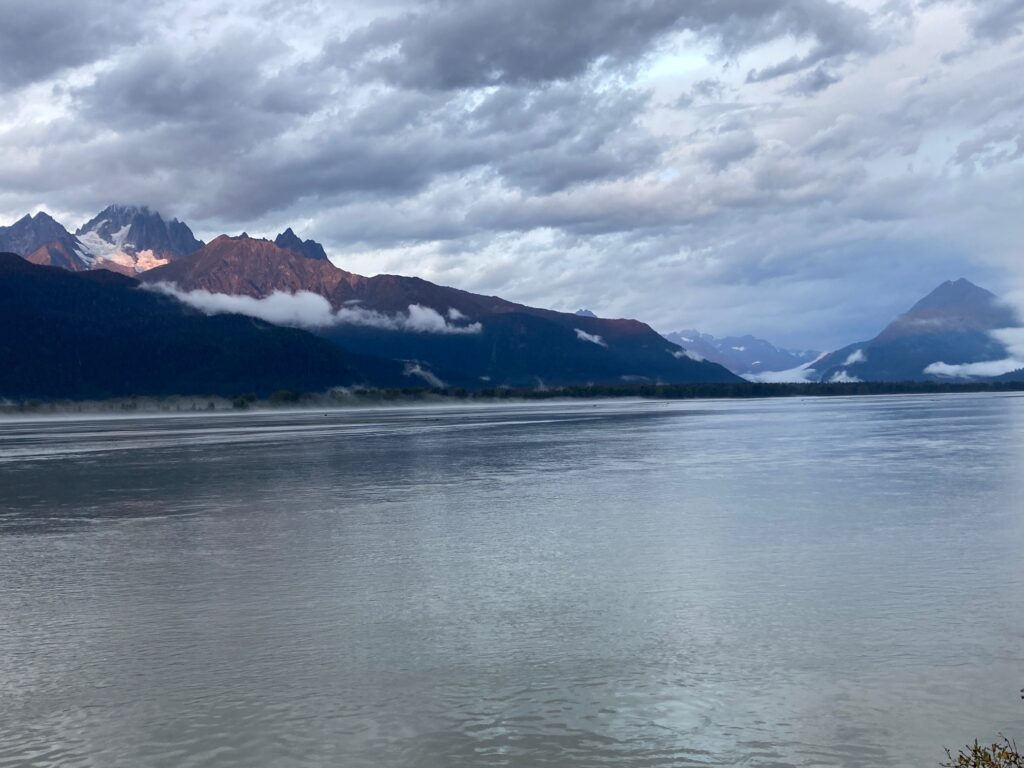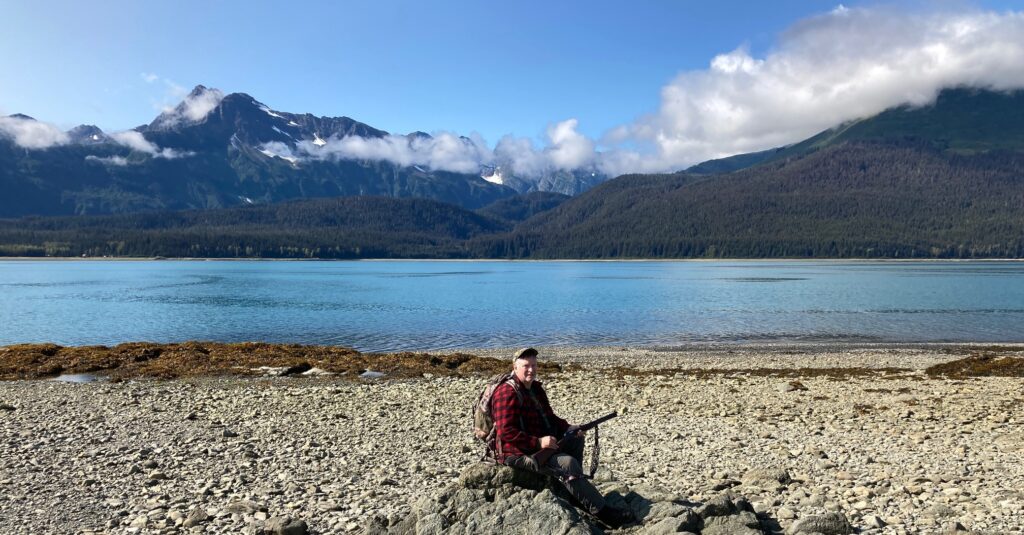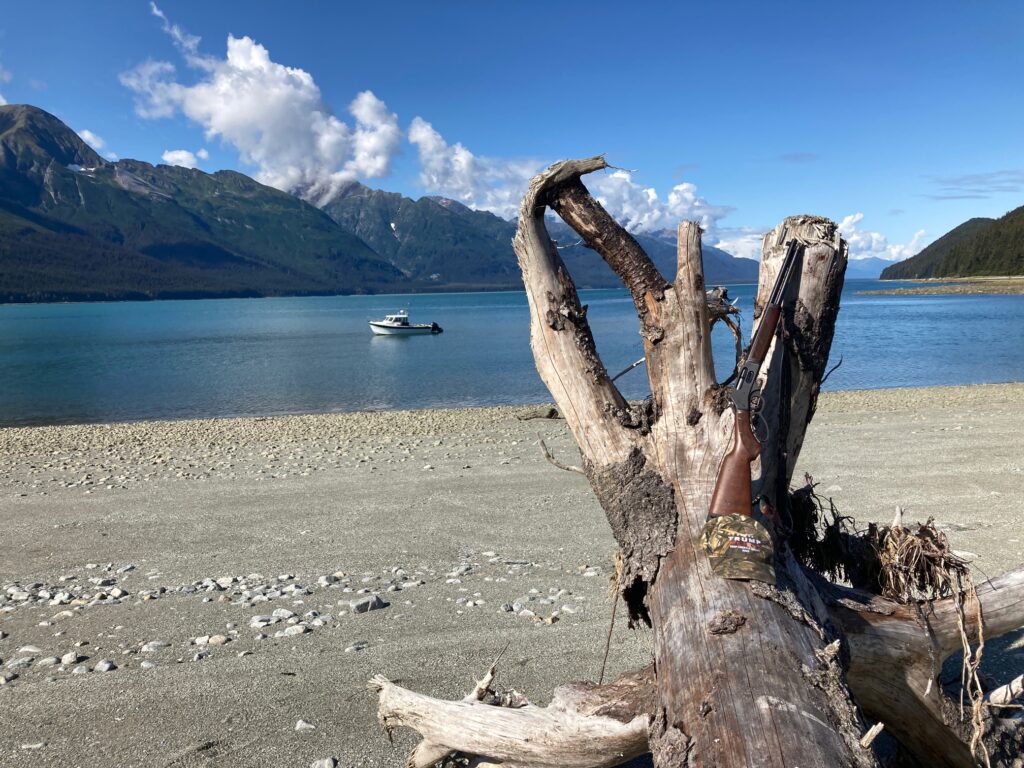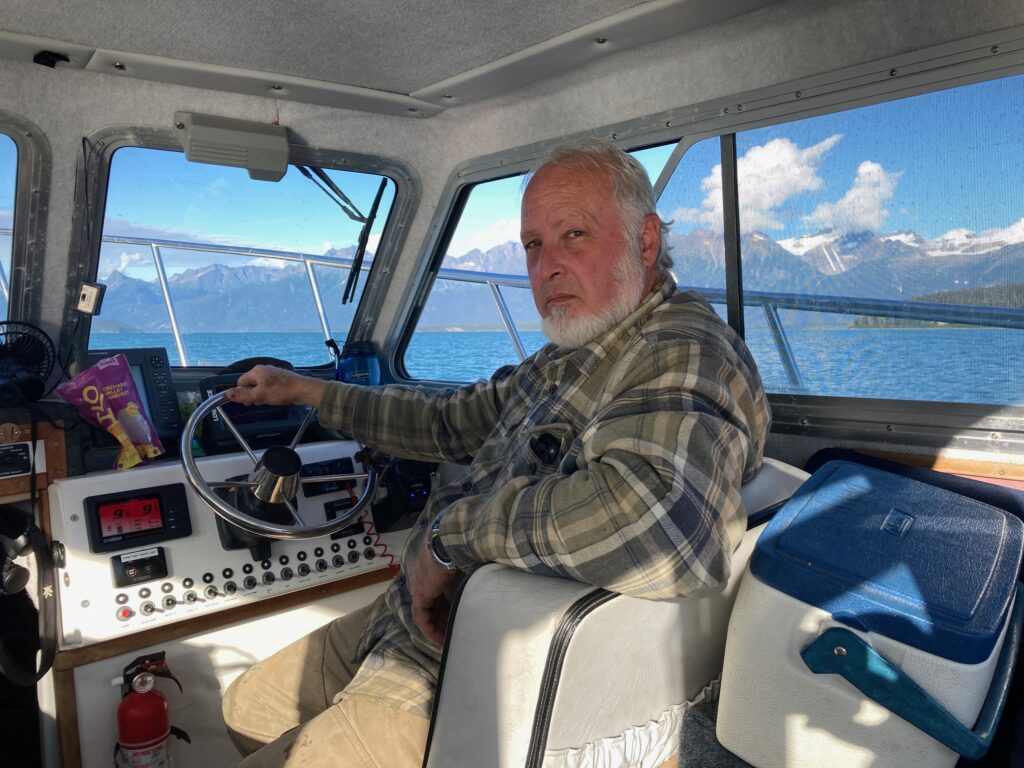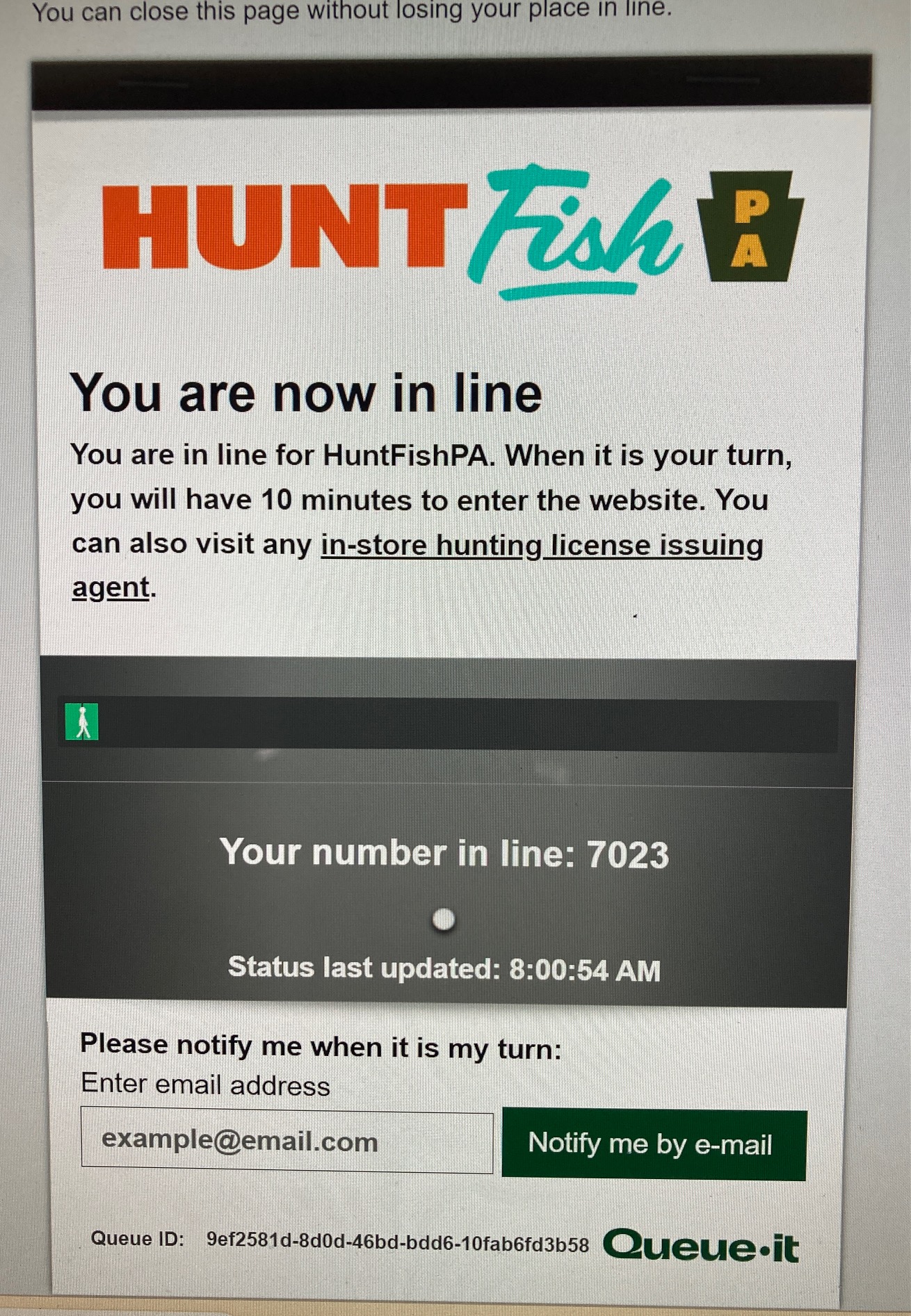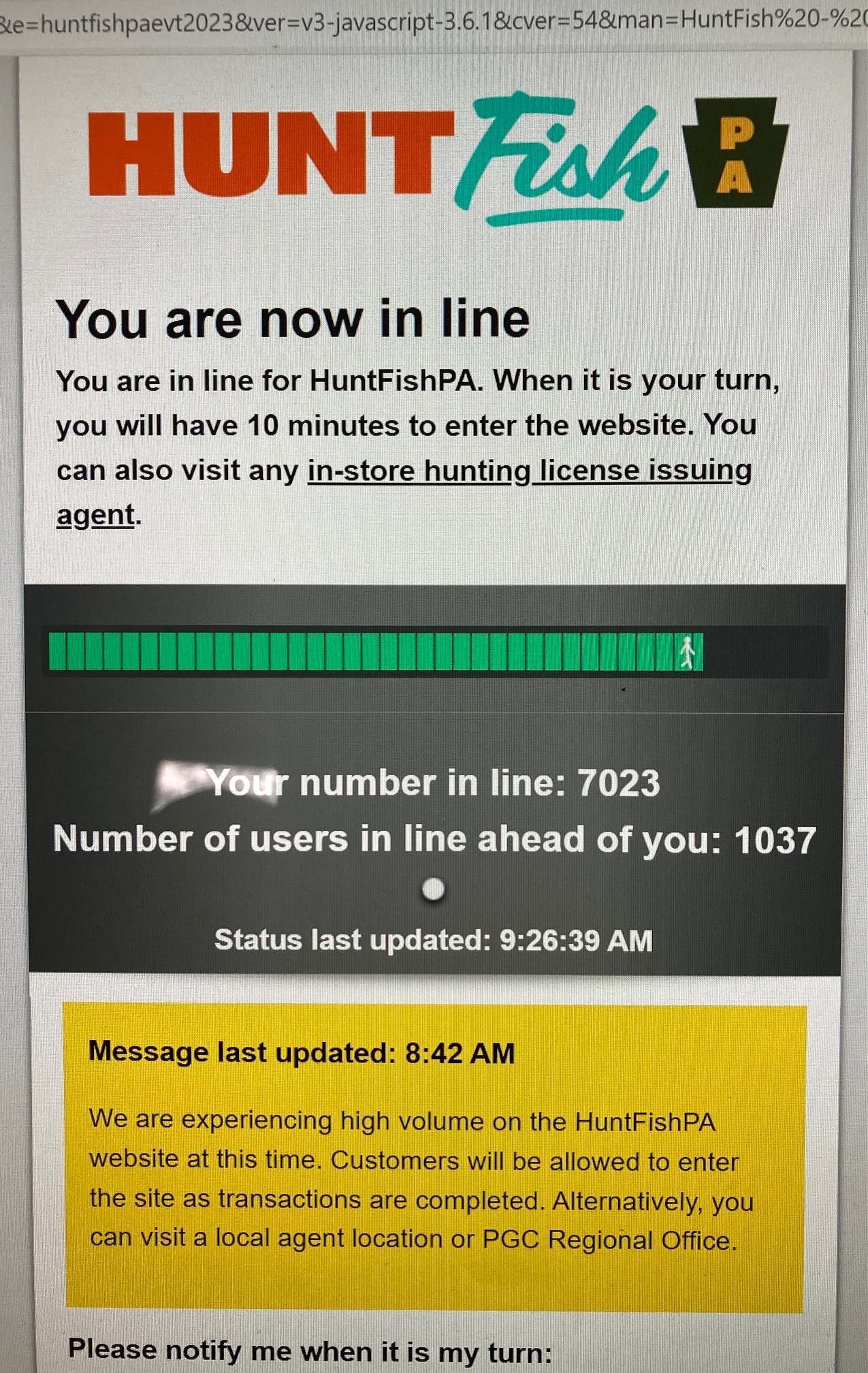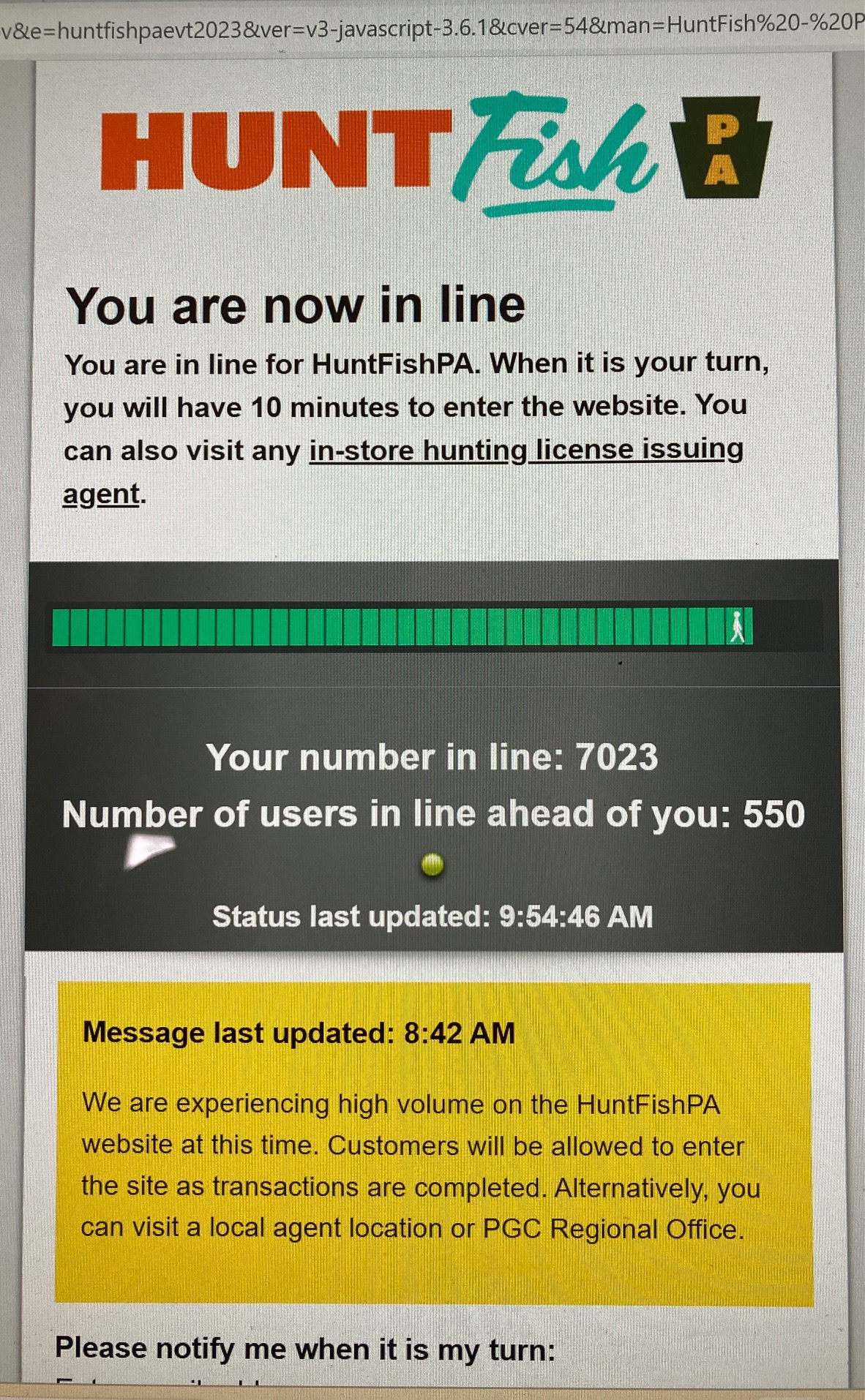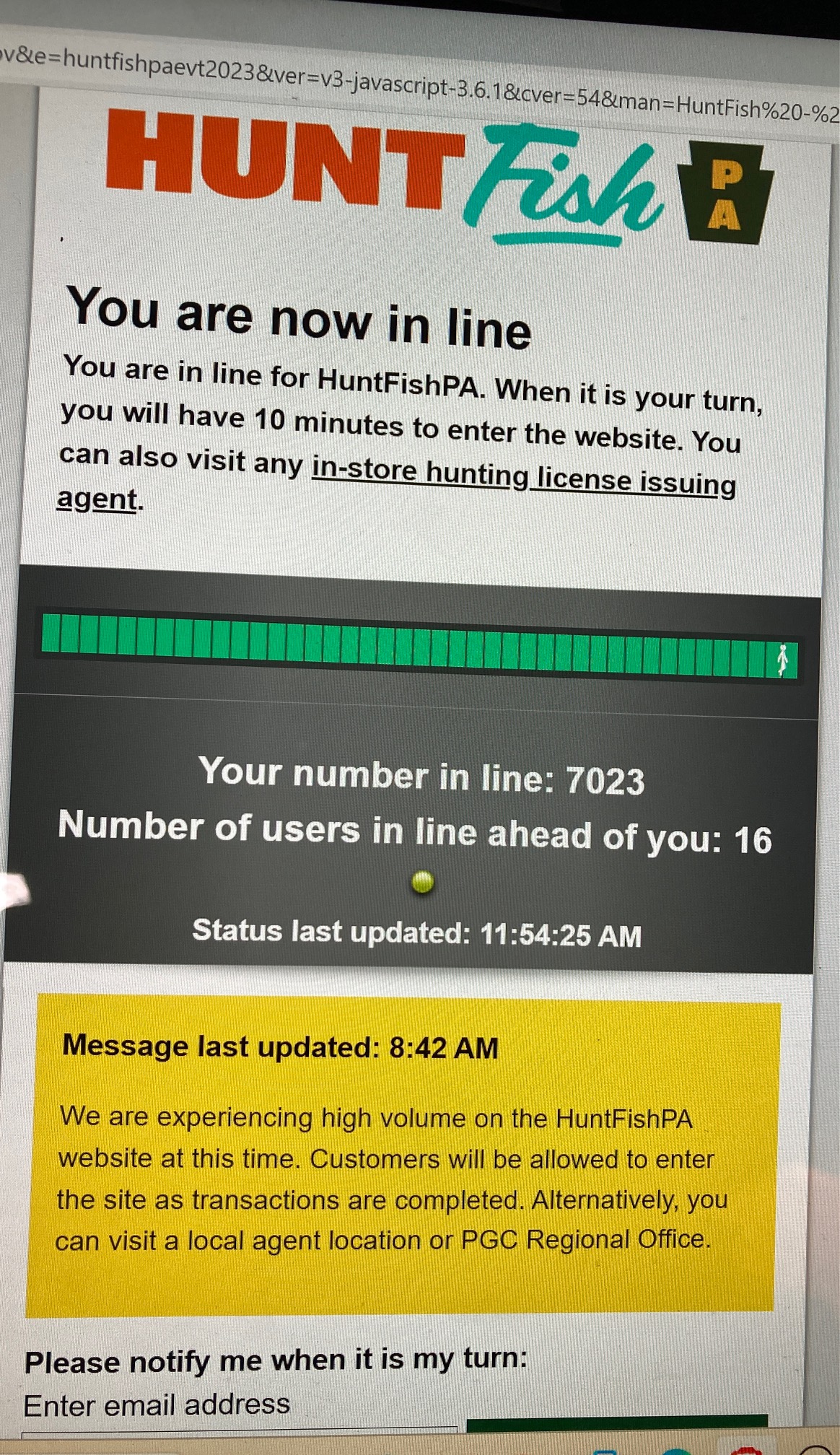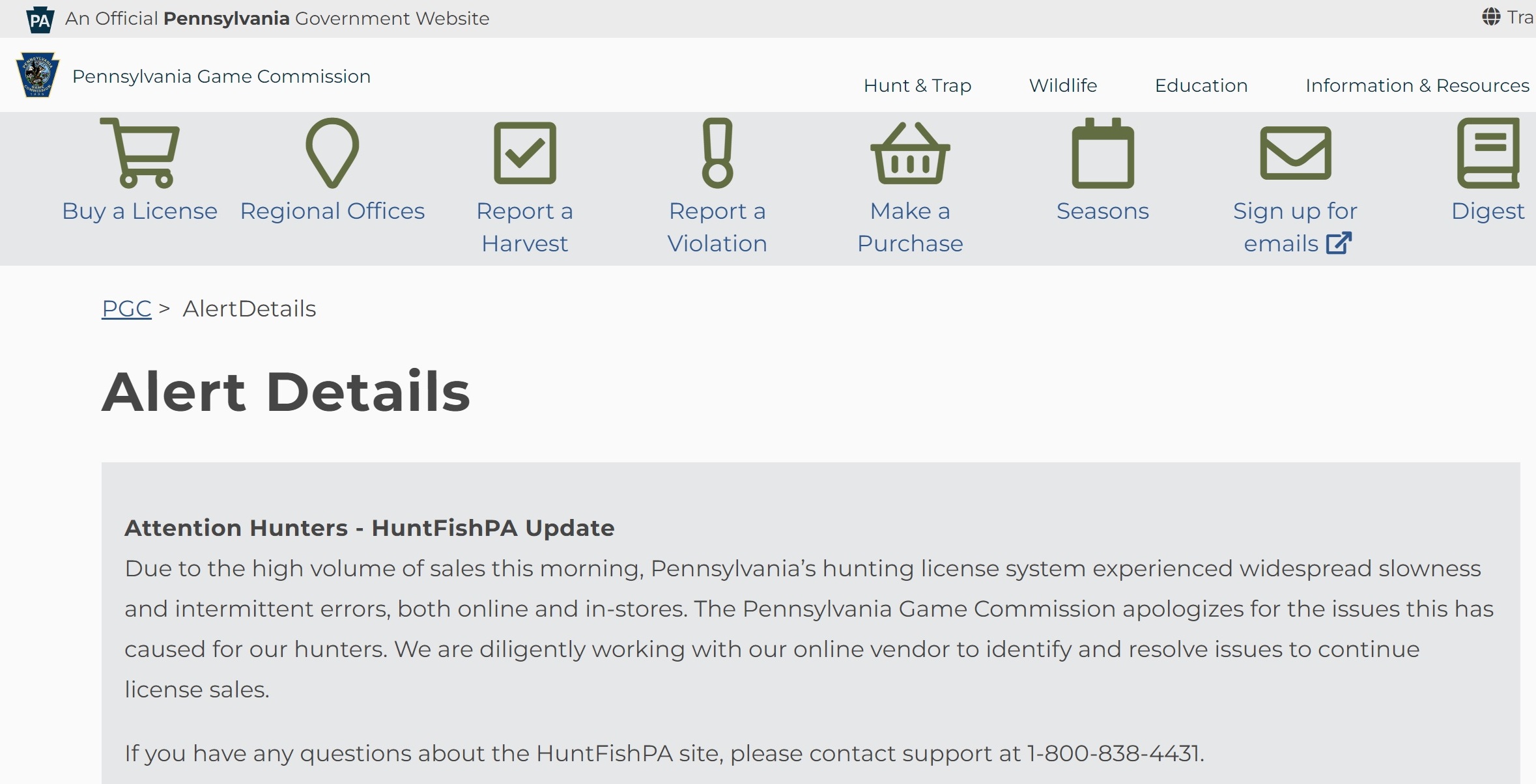Posts Tagged → bear
Ok so how is your deer season going?
You wait all year for these two weeks of rifle season in PA, and then after a restless night the opening morning arrives. Five days in, and hardly a shot heard each day, no deer seen, hardly any sign encountered, and you are wondering what the heck is going on.
Don’t sweat it, you are not alone. You are in very good company. A lot of Pennsylvania hunters are grousing to each other tonight about not seeing any let alone many deer so far, not getting shots at deer, not even finding sign of deer, like poop or tree rubs. Not even hearing shots. Apparently Wisconsin is also seeing a real drop in their deer harvest in firearms season, too.
Something is amiss, especially in the Big Woods, no question.
Are we witnessing some mass die-off from disease, like Chronic Wasting Disease, or Epizootic Hemorrhagic Disease? It is possible, but I have not yet seen any deer skeletons lying randomly in the woods. Maybe they are out there and I just haven’t found the graveyard yet. In 2005 northcentral PA had a huge deer die-off from late season snow and ice that made the mountains impassible. The deer could neither walk on the surface for weeks, nor could they dig through the compacted ice and snow to reach food. We did encounter random deer carcasses everywhere during the spring that year.
Maybe black bears ate more deer fawns than we anticipated (I witnessed a large black bear catching, killing, and eating a young deer this May, which is cool). Same can be surmised for coyotes, which are renowned deer eaters. After several years of purposefully hard harvests, there are now fewer bears in PA, by design, and theoretically less bear depredation of fawns in 2023. But there does seem to be an awful lot of coyotes. Everywhere.
Up north, we have no acorns to speak of. Late spring frosts killed our acorn flowers a couple years in a row, and gypsy moths have been terrible year after year. Any acorn flowers that survived spring frosts were eaten by the gypsy moths, whose egg masses are visible everywhere up here. So there is very little to no food in the Big Woods, and as a result, most wild animals seem to have flown the coop. Bear hunting last week was impossible. And so far this week, deer hunting has been tough.
Yesterday I was fortunate to set up in a natural funnel and catch two does transitioning from feeding areas to bedding areas. And today, with the help of friends on a small and carefully targeted drive, I filled my buck tag. Based on what I am hearing, I am incredibly lucky this year. Most hunters are struggling just to see deer tails bouncing off into the distance.
So if you are one of the PA hunters who is feeling dispirited right now about the apparent evaporation of deer this season, here is my best advice: Go hunt places you don’t normally hunt, and where you think others probably don’t hunt often, either. Steep hillsides are great locations for hiding deer. Play the wind, keeping it in your face as much as possible. Go slow, and quiet. And have a friend or two join you for a two-man push or leap-frog, or a two-man push with one stander. And then the stander becomes a pusher and the former pushers take up stands.
Remember that whitetails like to loop around behind their pursuers. If one guy is pushing and another guy is quietly lagging behind a hundred yards or more, he has a good chance of getting the deer that snuck off and went around the pusher. Again, make sure the wind is in your favor (blowing from the deer to you, not from you to the deer), and be as quiet as possible.
Switch up your game this season, because it seems that just sitting and waiting for animals to come out and present themselves broadside is not happening a whole lot in 2023. We gotta get in after them, and make our own action.
Good luck!
A fabulous hunting trophy
Another PA archery season over (UPDATE: No, it wasn’t over, I have not kept up with new PA archery season dates), another season I did not arrow a deer or a bear. It’s not that I could not have killed a buck with a gigantic rack, I could have, a hundred times. It is that I chose not kill him. He isn’t necessarily tame, but he has been hanging around an awful lot. It would have been easy to send an arrow or a bolt through him from a porch or an upstairs window. But in my old-er age, I must be turning soft-hearted. He even came into a ground blind I was in with a crossbow, and puttered around. I decided to admire him, instead.
Just seeing wild beauty like his brings me real pleasure. I don’t need to put his head on the wall for him to make me happy.
Even without killing a black bear or a wolf, I still got an amazing trophy from my Alaska hunt in September. And no, I am not referring to the beautiful stones and colorful pebbles I bring home with me as keepsakes from all around the world. Alaska streambeds were loaded with all kinds of incredible geological samples, and I could have easily filled a pickup truck bed with the easy ones. Instead, I picked up a memento of someone else’s kill, and brought that home with me.
While I was stalking a salmon stream in the northernmost part of southeast Alaska eight weeks ago, cradling a 45-70 rifle in my arms and looking for black bear feeding on spawning fish with one eye, or a wolf, and watching out for the ever-present brown bears/grizzlies with the other eye, I happened upon a scattering of big bones up against a stream bank. Bleaching white on the top side, and staining green with algae and moss on the bottom side, these bones marked a kill site. From what I could piece together, a two-year-old moose had made a stand against a pack of wolves or a large grizzly on this site, and had lost. It was right here where he had died and had been eaten.
One bone in particular caught my eye, the hip socket, sitting concave-side-up to the sky. What made this individual bone stand out so much was both how perfectly round it was, and yet how it was also framed on three sides by heavily fragmented and fractured ends of bone. Something really big had broken this heaviest of bones, and the tooth marks are still on the socket. As artists are fond of saying about something that catches all of the visuals just right, it was a study in contrasts.
I bent down, picked up the broken socket bone, brushed off the dirt and leaves, and stuffed it into my backpack among the long underwear and my PB&J sandwich. Back home in Pennsylvania, it was cleaned off, lightly bleached, and re-purposed into a pipe holder and ashtray. It is actually incredible how perfectly my tobacco pipe fits into that hip socket. Now I can use the bone as both an ashtray and a reminder of being in some of the world’s wildest country.
As soon as it dried, I sat down to enjoy a bowl of cherry cavendish, and with the light tobacco smoke swirling up around my head, I was immediately lost deeply in thought about God’s magnificent creation, the amazing wild beasts that have inspired us wee humans since our dawn here on Planet Earth, and how a hunting trophy is what you make of it. It doesn’t always have to be something you killed yourself. Sometimes it is just a small piece of the wilderness we love that serves as a symbolic touchstone and a time machine that transports us back to a place and time where all that mattered was the wind direction and the smell of Fall in the air.
Looking at this ten thousand years ago or fifty thousand, any Neolithic hunter anywhere around the planet would have felt exactly the same way. This one piece of fractured bone connects us two hunters across time, even though we never met.
A few more thoughts on Alaska gear & public land
Even people who will never hunt in Alaska want to know what kind of gear a guy carried while he was there, and they might even have some opinions about it. Alaska is kind of the go-to place for all imaginary hunts, survivalist prepping, and bush homesteading, and you can go on YouTube and on any related video find endless debate about guns and gear by all kinds of people, 99% of whom have never been to Alaska. After the “Thousand Overnight Tragedies” essay here a week ago, I got some questions about my hunting kit from people who will never do anything more than a luxury cruise to Alaska. I know well that if a couple guys ask, there are more who want to know but didn’t ask. So here goes, my best advice on how to be properly kitted out for Alaska.
First off, before assembling your Alaska kit you have to determine if you are staying out in the Alaskan wilderness. Plenty of people get air dropped into a remote wilderness spot, tent up near the lake or river where the float plane landed to drop them off, and that’s their base camp they hunt out of every day. It is the same place the plane will pick them up from in a week or ten days. If this scenario is how you are heading into Alaska to hunt or fish, then you need all of the survival gear, various fire starting methods, a beacon, etc. kit that you would need while wilderness hunting anywhere else in North America. My Seek Outside tipi tent with the large titanium wood stove has made all of the difference for how I hunt in wilderness (thanks to Ranger Ian for his guidance on this years ago after I reported how I nearly froze to death in his service territory).
Second, the month of year really makes a difference in Alaska. I have been there in July, August, and September. July and August are usually quite comfortable. In September you are beginning to get some chilly nights, and possibly chilly mornings. Maybe a chilly day. Warm clothing you can easily layer on and off, like a Filson wool vest, becomes critical the later it gets after August ends.
Finally, where exactly in Alaska are you going? Central Alaska encompasses most of the state, and it is kind of the rugged classic interior Alaska everyone thinks of when they imagine Alaska. But all of the state’s coastal areas are really different from the interior, especially as you begin to head north or south of Anchorage. Southeastern panhandle Alaska is a temperate rain forest. It rains there even when it is not really technically raining. Something like fifteen to twenty FEET of rain falls there in the southeast. Obviously you have to be prepared for regular rain if you are hunting and fishing in the panhandle.
If you are hunting out of an Alaskan home, say your friend’s or your cousin’s, or from a lodge, and then driving or boating to your destination each day, with plans of returning before dark, then here is the kind of checklist you will appreciate:
- Rubber rain suit, jacket with hood and pants. My 25-year-old Cabela’s blue rubber rain suit worked fine for both repelling the constant light patter and sometimes more steady rain. It also served as my wind breaker with only a tee shirt underneath. Blue is a bad choice for hunting, because many animals see blue like humans see fluorescent orange. When my blue rain suit finally dies, I will get a green one.
- Good rubber boots and also good leather hunting boots. I used both, sometimes on the same day, the rubber ones in the morning and the leather ones later in the day, or vice versa. If you are hunting hard, you need rigid ankle support, and I have not found a better boot for hunting in steep, rugged terrain than the Danner Canadians. I especially relied on the Danners on the SE AK island we hunted for blacktail deer. For this recent trip I finally bought my first “good” pair of rubber boots, the only “hunting style” rubber boots that properly fitted my enormous duck feet, by Irish Setter. These worked great in all wet environments I encountered, many of which were the margins and shallows of salmon streams. A PEET boot dryer is a good thing to have waiting at home at the end of the day.
- A light day-use backpack holding extra clothing, extra ammo, food, water, GPS (I use a Garmin 62s with detailed mini SD card maps) a range finder, binoculars, etc is an absolute necessity. My LL Bean hunting pack has accompanied me on hunting trips from the Scottish Highlands to Alaska and a lot of places in between. It is a fabulous and extremely durable, well thought out piece of kit.
- Binoculars are essential in Alaska, because it is such big country. Doesn’t matter if you are hunting or fishing, you absolutely must be able to see what is happening around you, if for no other reason than Alaska serves up cantankerous grizzly/ brown bears by the minute almost everywhere you go. And occasionally mean moose. Plus binoculars help you see game you are after, or maybe circling marine birds distantly picking off scraps as larger fish feed at the surface, where you can easily catch them. Leupold has been my USA-made go-to binocular maker for a very long time, after using various Nikons for a while. Yes, you can’t go wrong with Swarovskis or Zeiss, but I am brutal on my gear, and I will cry like a baby if all 265 pounds of me face plants on top of the $3,000 binos strapped to my chest. So I use a pair that are almost as good as the $3,000 pair, but which cost about 800% less.
- Range finder. Any modern range finder is useful for hunting in big country like Alaska, except over water. If you are hunting directly over a large body of water, then you need to calibrate your piece, or it will give you whacky results. I use a Nikon Forestry Pro because I work in the forest products and land business, but it has also served me just as well in hunting. I have learned that this model is rugged, because I use mine so much, in so many tough environments.
- Knife. Yes, you need a strong, sharp knife to go hunting correctly. I won’t wade into the whole which steel is better than my grandma’s Old Hickory no-snob high carbon potato peeler knife. And if anyone ever says the word “bushcraft” within arm’s length of me, you’re gonna get a healthy serving of country whoop ass. Because I can’t take it any more. The whole “bushcraft” genre is such urban flatlander weekend warrior nonsense, for God’s sake, let it be, leave it alone, leave it behind. A hunting knife can be almost any shape, size, and steel type that has worked well for you in the past. The Inuit and Inupiat just south and north of the Arctic Circle use Old Timer pocket knives, grandma’s ulu made of whale penis and wrought iron, and occasionally a high quality modern “huntin‘ knife” left behind by an appreciative tourist hunter. And guess what…all of these various shape knives work just fine for the subsistence lifestyle a lot of Inuit and Inupiat live. And they kill, skin, dissect, and eat raw on the spot – with their varied assortment of knives – more critters in one month than you will kill in a lifetime of Lower 48 recreational huntin‘. I happen to use various JRJ knives made by John R Johnson of Perry County, PA, because his ATS-34 steel and overall craftsmanship were as good as any huntin‘ knife available anywhere on the planet. Unfortunately, John has not made a knife in almost ten years. Fortunately, for years I bought armloads of knives that he custom made for me, and I enjoy using every one of them every season.
- Rifle. Yeah, some guys hunt Bigfoot with a souped up .44 Magnum or 454 Casull handgun. So what. A rifle is light years better than a handgun in every way, and I hunt big game only with a rifle, especially in real big country like Alaska. On this recent trip I carried my friend’s Henry 45-70 lever action, loaded with the Federal Premium HammerDown 300 grain rounds. There are hotter, more effective 45-70 rounds available from CorBon and Grizzly, but I was happy with the 3″ 100-yard performance of this round out of my friend’s rifle. And I don’t know how up to snuff the Henry is with the hotter 45-70 loads. The problem with the Alaska panhandle is that the weather there absolutely eats guns. If the saltwater doesn’t kill your gun, the constant rain and moisture will finish the job. A stainless steel gun like the Marlin 45-70 SBL is probably the best possible hunting rifle for Alaska. And this gun can handle the hottest 45-70 loads. One comment about the Henry: Its rear sight was very frail and kind of sad. It moved around all by itself, which can result in a severe mauling or death by Griz, if you happen to not check up on the rear sight and adjust it as needed every ten minutes.
- Backup pistol and bear spray. Bear spray works very well in places without wind or breezes. If you use bear spray in a place with wind or strong breezes, you are likely to incapacitate yourself instead of the bear (insert stupid human hungry bear joke here). I happened to be hunting and fishing in a SE AK place with constant winds and breezes, so I dispensed with the bear spray and kept a .44 Magnum revolver on my hip, loaded with some bear-buster ammo and not the ubiquitous 240 grain JHP that is guaranteed to piss off Griz more than kill him. Speaking of backup, I carried an emergency beacon of unknown make or vintage on most of my hunts.
- Clothing. My old tried-and-true Cabela’s Gore-Tex hunting pants were perfect for the cooler days, and my old tried-and-true Columbia nylon zip-off cargo pants were perfect for the warmer days. A wool hunting shirt in red and black buffalo plaid (of course) with some thermal long underwear is all I needed in the early season. I wore a no-name fluorescent orange fleece hat as well as my 2020 Trump hat. Sometimes together when it was cold. Mid to late September and beyond, you need real cold weather gear.
Good luck if you go DIY hunting in Alaska. DIY solo is my thing, and I think it is the most fun way to wilderness hunt. The challenge with DIY in Alaska is it is so big, and the critters are so big, and the distances are so big, and the civilization is so small and so far away. You really can’t do a DIY hunt by yourself in Alaska. It is not safe, and a thousand things can go wrong after you are successful and kill the animal of your trophy dreams. Go with a friend, go with a guide. And be smart about balancing your kit with practical items you are truly likely to need. Hunting in Alaska is not automatically a survival test or a Bataan Death March. You don’t go to Alaska and automatically plunk yourself down in the woods and start doing a video on (puke) bushcraft. It isn’t all dangerous, nor is Alaska all wilderness. Plenty of good hunting and fishing is available a decently brief drive out of any of the major cities, but it does get better the farther out you go.
Speaking of going further out of civilization, all this amazing hunting and fishing and trapping in Alaska is possible only because of the huge critical mass of public land there. Yes, I agree that federal and state agencies sometimes mis-manage public land. And sometimes those agencies end up “mis-managing” their relationships with the American citizen taxpayers who pay the agency staff and who own the public land the agencies are supposed to steward. But I think that public land is one of the very few things that government does pretty well. And even when government staff screw it up, the public land is still there afterwards.
A thousand overnight tragedies
Normally, the smell of rotting fish is a signal to clean out the fridge or to leave the area you are in. It’s a universally bad smell, and no one normal wants to be around it. But it was a pervasive good sign where I happened to be standing, because it was associated with the freshly dead salmon heads and remains at my feet that had not been here the previous afternoon. A thousand individual tragedies had occurred along this stream bank overnight, as bears had picked muddy bank spots to grab spawning salmon and take them uphill where they could eat them without the fear of being ambushed by humans, or bigger bears.
We had hunted and fished along a roughly seventy mile vertical stretch of southeastern Alaska for over a week, and in addition to beginning to smell a little fishy myself, I had also saturated and possibly satiated a cavernous need inside me. It is an ever-present deep, clawing need that most wilderness seekers share, be they bikers, hikers, canoers, campers, photographers, fishers or hunters. Sorry, I am not going to quote Thoreau or Muir or Roosevelt on the tonics, joys, highs, or benefits of directly experiencing wilderness. My own wilderness pleasure is gained from simply not seeing a single other human being (except my hunting/fishing partner, when I have one) anywhere near where I am hunting or fishing. That unusual moment results in me feeling like I have better than average odds of achieving my goal, because I have the whole landscape to play without intervention.
On this trip, my “public” goal was a wolf, a blacktail deer, and/or a big black bear better than 300 pounds. Hides and skulls alone were going to come home with me. Edible meat was going directly into my buddy’s freezer. All of the many salmon I caught on the trip went into either my buddy’s smoke house, into his freezer, or into my stomach. It pleases me to report back that chum (dog) salmon directly out of the ocean taste damned good. It is also a fact that chum salmon do not keep well overnight, and that even halibut turn up their noses at it. I suppose freshly caught chum can be immediately canned, but given that there are usually better alternative salmon species to eat and can, I don’t see why a person would make this choice.
Incidentally, about those salmon: Alaska’s management of its salmon runs has been so good, so professional, so scientific, and so successful, that there is actually a glut of salmon in the streams and on the American market. Therefore, wild caught salmon prices are way down. A lot of commercial salmon boats were out netting, and the cannery we visited was in business, but with diesel fuel at about eight bucks a gallon there and salmon at eighty cents a pound, it’s hard to see how the netters will survive. But thanks to the Alaska Department of Fish & Game, the bears have plenty to eat before denning and hibernating for the long, cold Alaskan winter.
Goals are critical on a wilderness trip. Even stupidly simple ones. You have to have goals before you set out on a trip like this, or else you will wonder what the heck you were doing out there when you get back to civilization. My actual personal goal was simple: To fish and to hunt as much as I could, and this goal was easily met. On this trip, I was often able to do both hunting and fishing simultaneously: We slowly trolled salmon spoons behind the boat while glassing the shorelines for critters. A rubber dinghy towed in the backwash provided us the ship-to-shore transportation we needed. See a salmon stream that is calling your name? Go ashore and hunt it, and look for salmon-eating black bears to fill some tags; and look out for the griz. We saw a lot of griz.
Only saw wolf tracks in one very remote spot, and I passed up the one black bear I had a shot at. Only twenty feet across the salmon stream from me, he was either a genetic runt, an ancient-looking yearling, or maybe a female. Whatever kind of black bear he was, he was crabby enough to growl at me before shambling off to less crowded fishing spots. I wouldn’t shoot a bear that small in Pennsylvania, and I sure wasn’t going to fill my Alaska tag with it. Maybe I will go back for the spring bear hunt in 2024.
Despite fighting our way up into the interior of an island known to have blacktail deer, we saw none and feared the griz there more than we were willing to keep going after deer. Signs of griz were everywhere. I picked and popped high bush cranberry and high bush huckleberry while noting the increasing deer browse the farther in and higher I got. But it was a veritable jungle, and surprising a griz up here would mean my certain mauling, possibly my death, and so I decided to nicely frame my deer locking tag when I got home instead of risking life and limb to fill it. I headed back out and found Merlin asleep in the sunshine on the beach.
A loud thud on the bottom of the boat awakened me from my cramped sleeping position, and I rolled out of my sleeping bag onto the cabin floor, which was cluttered with gear and guns. Walking out onto the deck to look for the source of the thump, I saw a sea lion, a seal, and a pod of porpoises chasing salmon all around us in the early morning dimness. Mist rose from the water, and then the rosy tint of dawn’s first sunbeams lit up a nameless glacier high up in the crags across the water. I felt stoned on all this Mother Nature. Like I said, I was there just to hunt and fish, and whether or not I went home with the physically tangible results was not nearly as important as absorbing and sucking up the magic around me and filling that big, hungry, empty cavern in my soul. You just can’t have this magical experience without public lands, and some of that designated as wilderness. This, these, we had.
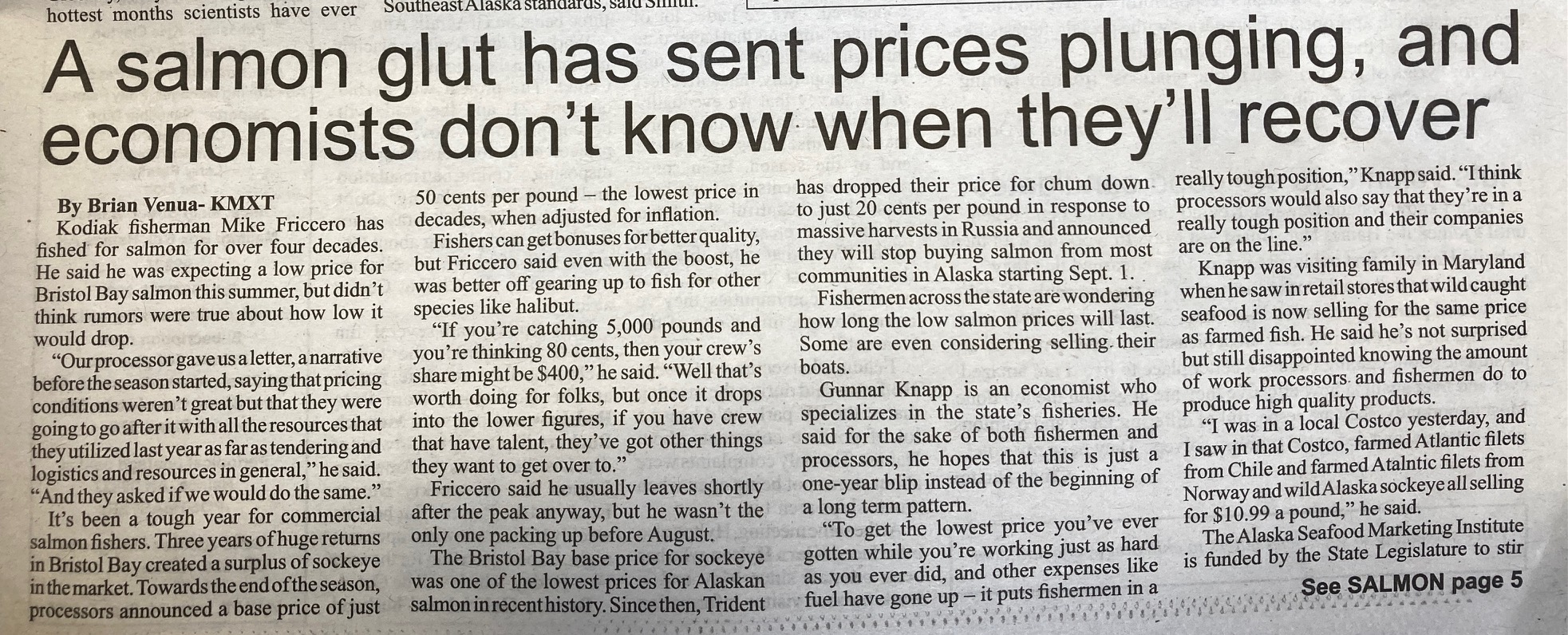
Alaskan salmon management has been so good that there are actually “too many” salmon, if there is such a thing
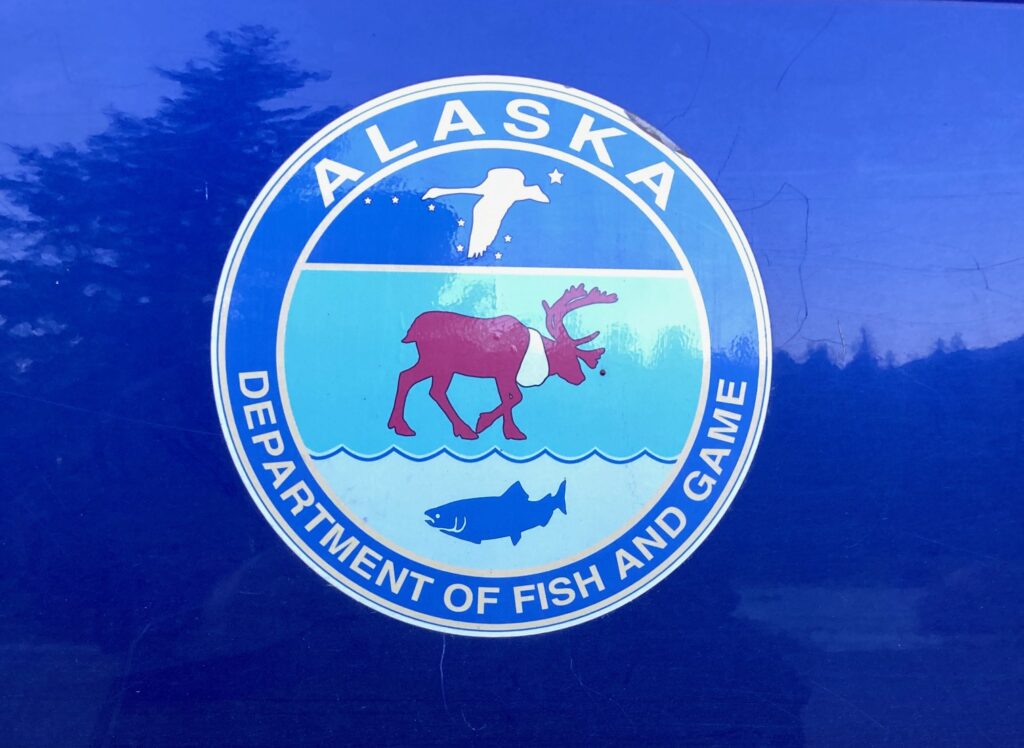
Reflected is the Chilkoot River, where we fished with the bears and a gaggle of international tourists following them up and down the river
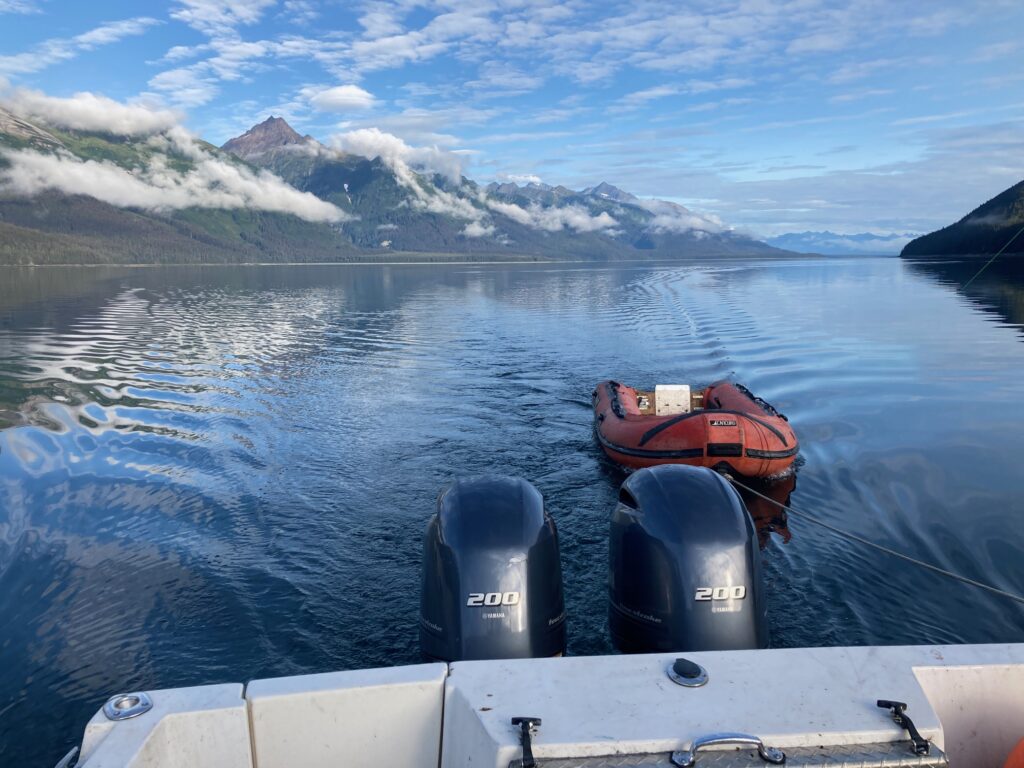
Trolling spoons for salmon, towing our dinghy, and glassing the shoreline for critters. This is hunting and fishing at the same time
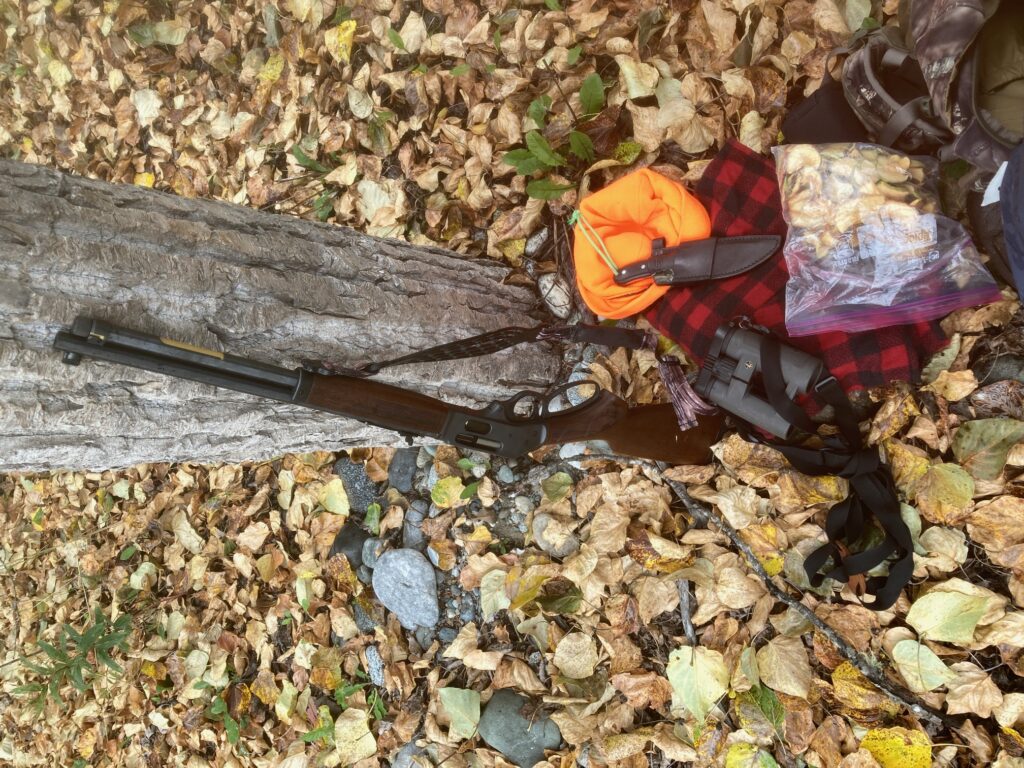
My hunting kit. A Henry 45-70 lever rifle (not crazy about the cheesy rear sight), a JRJ knife, rugged Leupold binoculars, home made dried fruit and jerky
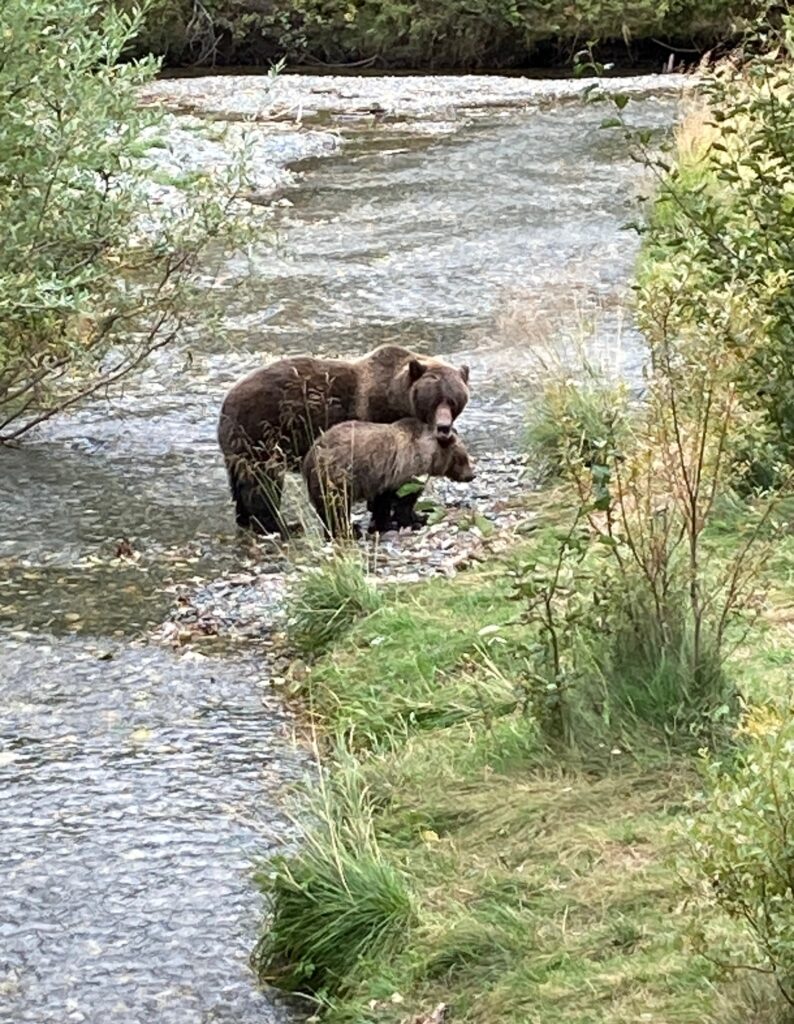
Grizzly sow and cub eating salmon as they spawn upstream from the Chilkat River. I saw a lifetime supply of griz on this trip.
How’d that go? PA begins online hunting license & tag sales
Today at 8:00 AM marked the first day of the Pennsylvania Game Commission’s true entry into the modern world of home computers and the Internet. This probably sounds like an unnecessarily harsh or even a commonly outlandish criticism of the venerable PGC, but it is a technological fact that today marks the very first step by the 1895-founded-and-minded wildlife agency into directly integrating with its customer base.
And it has not gone well, although it could have gone a lot worse. Monday end-of-business hours analysis shows the PGC website processing about 7,090 license purchases per hour. That is about 118 per minute, which is a lot faster than the roughly 1,900 licenses per hour purchased in the early time frame I operated in. Given all of the little moving parts involved, especially that carefully measured doe tag purchase, I guess I can see why this is taking longer than the two to three minutes total that each person expected to spend on it. It still frustrated me and others who are not at war with PGC.
The process has been marred by exceptionally long waits, both in-person at brick and mortar retailers and online, with lots of “system crashes” and people standing in line for hours, spawning humorous memes like the old and now former pink doe tag envelope saying “Miss Me Yet?” I like the meme of the skeleton passed out over the desktop computer “Waiting for my 21st century Internet purchase from the PA Game Commission.”
The truth is that this day had to come, sooner or later. The old double-stamped pink envelope US Mail process was increasingly marred by the US Postal Service’s incredibly ever worse performance, to the point where people were photographing piles of time-sensitive pink envelopes sitting in heaps in some post office rooms, waiting for who knows what or who knows who. No one likes to be treated differently than everyone else, and the pink envelope lottery was an idea from 1945 that worked when postal employees did their jobs. These days, the Postal Service is notoriously unreliable. We can’t have a doe tag distribution process that relies on unreliable people and institutions. Even when the applying hunter does everything correctly, his or her pink doe tag envelope might take a wrong turn at Albuquerque and arrive days or weeks after the last doe tag was distributed. Which greatly impacts the hunter’s plans and prospects for that upcoming hunting season.
My own experience today had me first sleeping fitfully all night like it was hunting season, and finally dragging myself out of bed and hunkering down by the laptop well before the 8:00 AM beginning of the online purchase process at www.huntfishpa.gov. Almost like opening day of deer season and sitting down at an ambush site. Except this process revealed itself as having actually started well before the appointed 8:00 AM hour, as I was number 7,023 in line when I signed into my PGC huntfishpa account. With barely any coffee in my veins to buffer this unhappy revelation, an ice cold shock ran through me as I realized I was both early and yet already very late to the process. Thousands of hunters were ahead of me in an online process that was unknown, untested, and sure to have its ups and downs and delays.
The big ticket item for most of us early applicants is getting the doe tag of our first choice Wildlife Management Unit. It is why we stayed in the game til the very end. And the numbers tell the tale: My own first choice, WMU 2G, sold 17,000 doe tags by 5:00 PM today, about twice as many doe tags as any other WMU. There is a strong fear in a lot of guys that if you don’t get in line early either online or at a store, you won’t get your coveted doe tag in your primary hunt region. Fact is, with the ever popular northern “Big Woods” WMU 2G, that fear is well founded. There are many more hunters wanting WMU 2G doe tags than there are WMU 2G doe tags to hand out. The early bird gets this worm, every year.
[UPDATE: At 9:42PM I looked at the doe tag numbers and 23,502 WMU 2G doe tags out of the 35,000 total allocation for that WMU have been sold so far. A sale rate far beyond any other WMU. This means that 2G will be sold out by Tuesday early morning hours. The hunter demand for Big Woods 2G tags has always been high, we knew it, and now we get to see how that demand plays out when the hunters themselves are put in direct control of their tag orders]
Four hours and ten minutes later, having obsessively hovered over my laptop screen the entire time while emailing and bitchfest-texting with friends in both better and worse positions than I, I finally had ordered my general hunting license plus all of the additional license and permits I get, like furtaker (trapping), the annual elk application (I will take anything ya got anywhere ya got it), muzzleloader, archery, spear, atl-atl, sling, blowgun, black bear, fisher, bobcat, armadillo, hog, dog, rat, bat, and zinjanthropus tags. And yes, I got my WMU 2G doe tag, which enables me to hunt the way I enjoy most – solo pack and rifle and maybe an overnight and campfire somewhere way off the beaten path and far from roads and people, and the promise of a long and heavy pack-out of boned-out meat with a single doe’s ear and a completed tag attached. This kind of hunt is the most rewarding among big game hunters everywhere. Guys sitting in warmed box blinds overlooking fields and ravines have no idea.
So yeah, I waited and waited to ensure I got that 2G doe tag. A lot of my Big Woods hunting depends on it.
Anyone old enough to pick up on the Bugs Bunny theme above will understand where I am coming from; it was a loooong and kind of zany morning. In this day and age of Amazon and eBay and Gunbroker one-stop-shop badda bing badda bang badda boom go online and it’s yours two minutes later, Pennsylvania’s entry into the online hunting license world was practically Stone Age. New York has about as many hunters as Pennsylvania, and I have never encountered anything like this when I order my hunting license and tags from NY. It is usually immediate. Even Kentucky’s online hunting license and elk tag application process is faster than ours was today.
I am not picking on Kentucky….but come on, we all know it, Kentucky is not known for being especially technologically advanced. And yet….!
On the one hand, we must must give PGC credit for taking the long step out of 1895 and into the computer and internet age. This step the agency took this morning was one small step for PGC and one giant leap for hunterkind, or maybe the reverse, or whatever….. something like this. It is a big deal and I send you guys three cheers. Three grouchy cheers. Let’s not do this again, OK?
Yes, today’s license purchase has been marred by delays that seem unacceptable, but we all know that the PGC’s public employees have way too much pride to let this situation continue. It is a fact that a lot of employees and contractors will be working all night on this new system, and that by the time 8:00 AM breaks tomorrow, a lot of the glitches and delays we experienced today will be a bad memory for some, and a non-experience for a million others.
PA elk & bear seasons now behind us
You can spend all year excitedly anticipating a few days here or there, and before you know it, those days arrive, they happen intensely, and then they are over like a dream.
This dream we speak of here are the various big game seasons that are such a big part of so many peoples’ lives, entire families and communities, entire businesses (I think hunting is an annual $1.6 BILLION business sector here in Pennsylvania). Thus far we have had an elk season and now the main bear season pass along. Here are some of my thoughts on these two wonderful experiences.
First, the elk hunt.
I was fortunate enough to draw a coveted PA elk tag, after applying for many years and building up a lot of preference points. The lottery drawing was announced in late August, and I immediately began planning. The general elk season is just six days long, and unless you are going to engage a guide for a few thousand dollars, you have a lot of work to do before setting foot afield with a gun. If you draw a bull tag, paying a guide is worth it.
After a tremendous amount of analysis and planning, and some September scouting, I was fortunate to hunt for elk with some good friends and a .62-caliber percussion rifle over my shoulder in Elk Zone 13. We camped out on a log landing in Sproul State Forest, with elk all around us, and each buddy scouted hard each day, looking for elk that the sole hunter (me) could get after.
Elk Zone 13 is huge, and contains a lot of vast public land. And so the elk harvest data shows that it is a bit of a Death Valley in terms of hunters actually killing an elk within it. While a lot of Pennsylvania elk hunting takes place briefly where a lot of the local elk have pet names and are used to being around people, there are a few elk zones where the opposite is the case. Zone 13 is one of those opposite cases. It is a tough place to hunt under any conditions, and under the rainy, warm, and very windy conditions we had, it was just about impossible. In the end, just one of three bull tags there was filled, and as of the fifth day of the six day season, just one of the six cow elk tags had been filled. I was not one of those people lucky enough to fill my elk tag.
And it was not a harvest failure because we didn’t hunt smart. We hunted so smart that we were bumping into elk guides and their clients at every turn. We had done our homework ahead of time, and we knew where the elk were likely to be, which is where you will find an elk guide, too.
One of the things I did as part of the analysis and planning phase was was plot all of the past elk harvest data on the large Elk Zone 13 map the PA Game Commission sent me. Once your eyes see exactly where the elk are killed every year, almost always in large clusters, over the past seven years that Elk Zone 13 has been around, you recognize where to concentrate your field scouting efforts. And then our subsequent field scouting efforts confirmed the presence of elk, including the day before the elk hunt started.
Like I said above, the weather conditions were awful for any type of big game hunting, and especially with a primitive weapon such as I carried. My effective range was 110 yards, and 75 yards was a lot more preferable. But range doesn’t matter if you can’t get an elk to stand broadside for a few seconds. I did mix it up directly with an elk herd that was hiding in a forest, and I did call one close back to me, and I did get a couple good setups on moving elk. But the seesawing winds gave away my presence each time, and the elk stormed off each time. Like I said, I had a wonderful time with good friends in a beautiful place with a fantastic gun over my shoulder. Elk or no elk in the hunting bag, I had a great time hunting elk in Pennsylvania (an especial Thank You to the many private landowners who generously granted me access to their properties to hunt elk).
Now, bear season.
Bear season ended yesterday, and the last of the bear hunters grudgingly left the cabin today. As usual, we had a large crowd gathered here, with everyone happy to catch up with chums from years past, sharing good food and good drink and good cheer. One thing all hunters eventually begin to notice is that with age comes a mellowing of the spirit. The chase is not as important as simply being present in God’s creation, often communing with Him in the largest house of prayer anywhere, the mountain forest cathedral.
And so fewer and fewer guys are coming here to hunt, and more and more guys are here to relax. And that is OK.
We who both communed with God in the mountain forest cathedral, and who also hunted, saw no bears and only a few deer. Mostly because there are no acorns in the woods, and all wildlife must go where the food is. If there is no food here, there are no bears here. Gypsy moths devastated Pennsylvania’s oak forests this past summer, and so there were no oak flowers to turn into oak acorns to fatten up buck and bear, squirrel and turkey. The woods was totally quiet this week, and it made me wonder what a squirrel migration looks like. Do hordes of mountain squirrels move en masse into suburban yards in lean years like this one? And where the heck do all the bears hibernate?
Roughly 1,450 bears were killed in PA’s early archery and muzzleloader seasons, and so far just under a thousand bears total are reported for this week’s bear rifle hunt. Usually this week’s four-day hunt results in an enormous bear kill. We are now looking at an epically low bear harvest in a state with a huge and burgeoning bear population that needs managing (Just a few days ago New Jersey issued an emergency bear hunt approval, because The People’s Republic of New Jersey is being overrun with bears, which unfortunately cannot be trained to eat liberals but whom the liberals recognize as a natural predator and are seeking to reduce out of self defense).
Another thought a lot of people are sharing today is that the early bear seasons, archery and muzzleloader, are very effective, so that come the late November bear season, there are a lot fewer bears to be had. Bears that are facing both extreme hunger AND extreme hunting pressure will den up early to get out of the storm. It seems a lot of the bears that survived the early seasons arrived in a bleak foodless November and said an early good night until March, 2023.
Next up is deer season, another dream time. And our deer patterns are also all off kilter here, so it is going to be a very interesting deer hunt in the mountains. Again, it’s no acorns, no deer. Except for that one gigantic buck I saw a couple times….stay tuned for that report. Let’s hope it makes up for the no elk and no bear reports we already filed away for 2022…
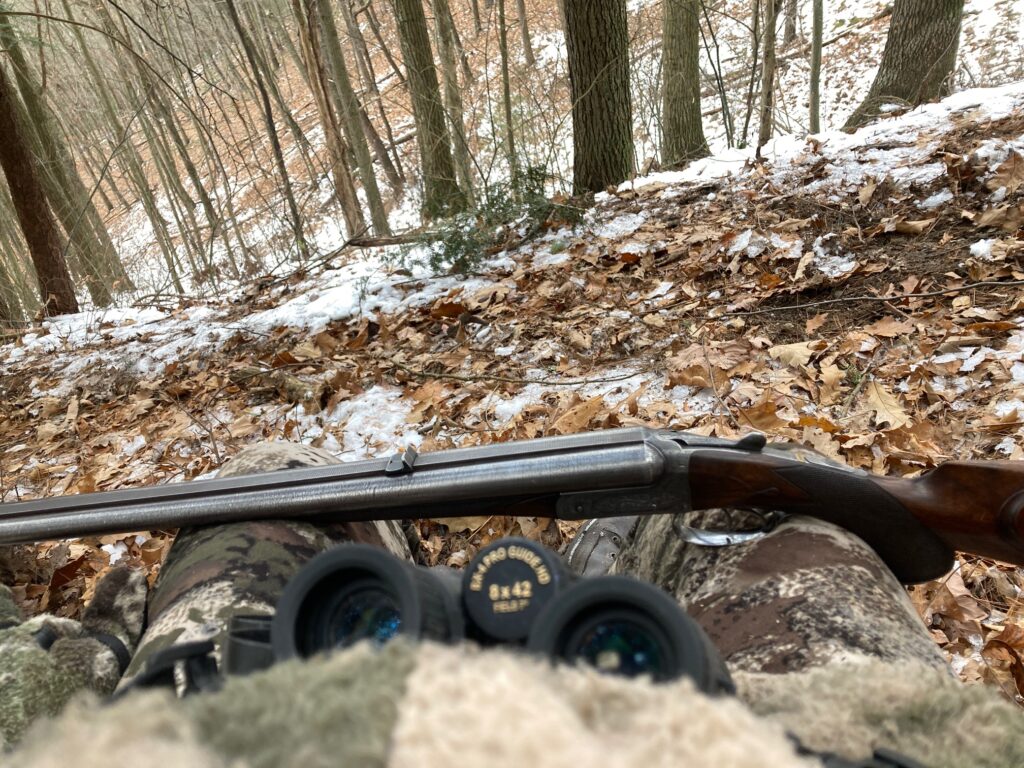
An 1884 double rifle made for tigers in India would be great bear medicine. If only a bear would appear.
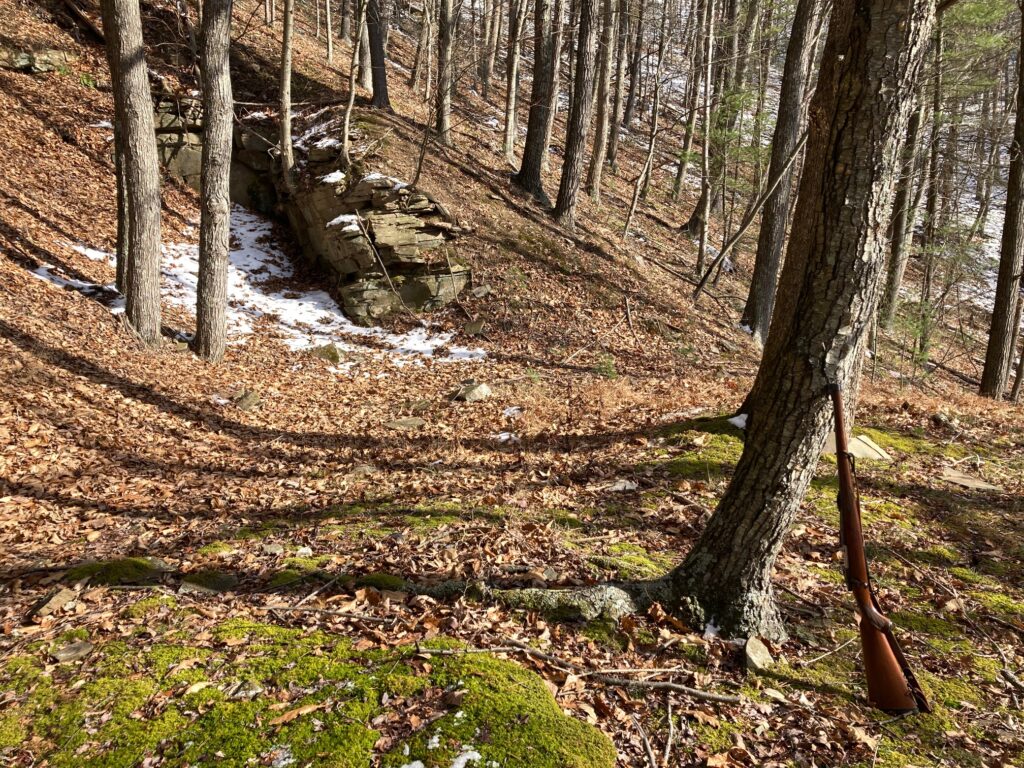
This remote old mine is one of dozens that dot our mountains. It is a fine place to hunt, take a nap, or write in a notebook. A couple times I have done all three in one visit.
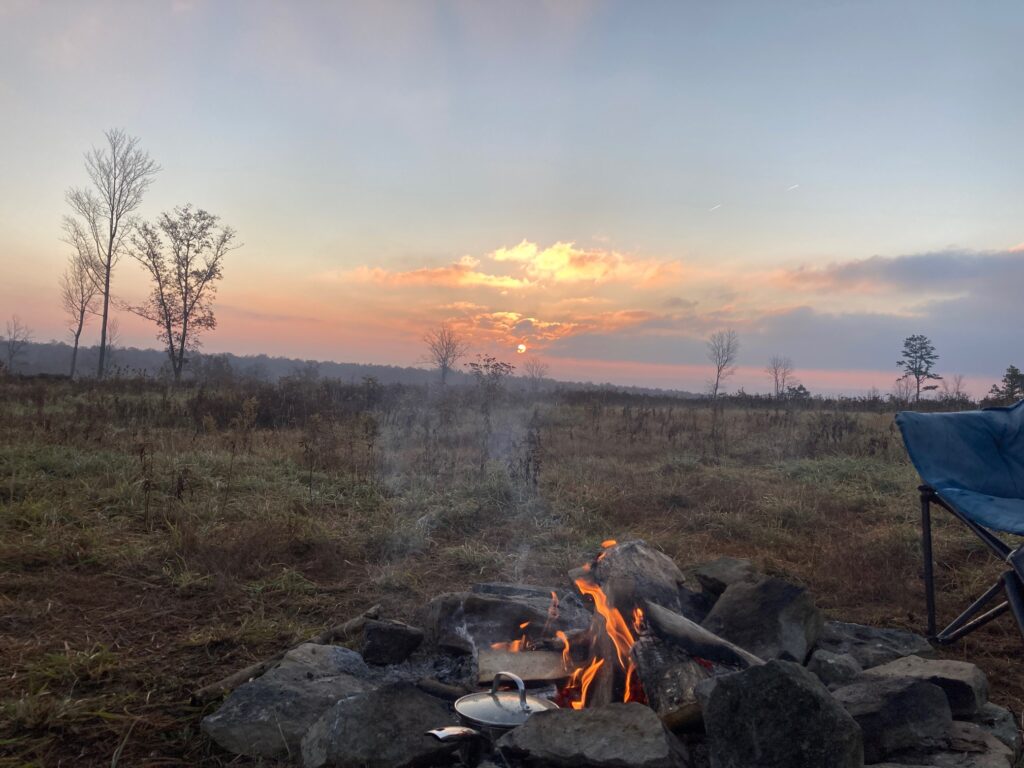
Camped with friends on an old log landing in the Sproul State Forest is a wonderful way to spend life’s limited time, elk or no elk in the bag.
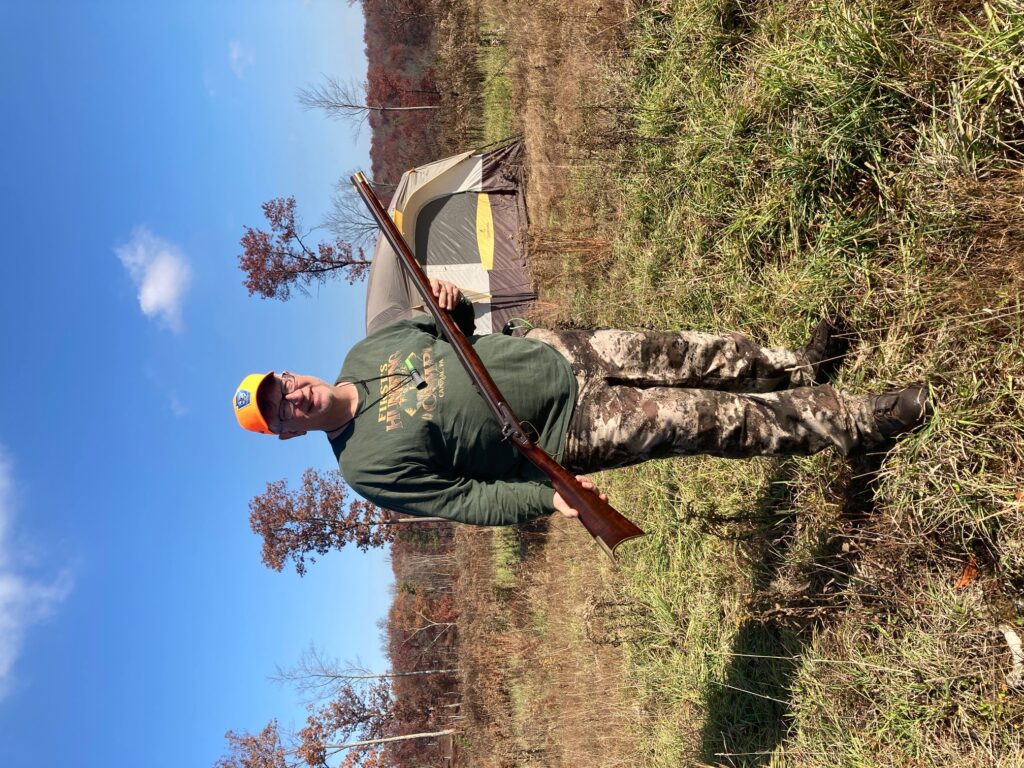
A great way to spend a day hunting elk, with a beautiful .62 caliber rifle (not a smoothbore) made by Mark Wheland here in PA. With its 335-grain round ball, it is easily capable of cleanly taking a hearty elk.
Oh, that tangled Ukrainian-Russian knot
So Russia just invaded Ukraine, which is like a giant grizzly bear attacking My Little Pony.
Why is Russia doing this? What can Ukraine do? What does this portend for the rest of the world?
Few regions of the world have as much tangled, messy history as Eastern Europe, in which Ukraine and Russia kind of rest. From the Balkans to the Baltic Sea to the Urals to today’s Germany, huge and small tides of humanity have swept back and forth, now running in fear, then running in imperial expansionist savagery, for at least a thousand years.
And that is not even counting the Mongols under Ghengis Khan or Attila the Hun, both of whom wreaked incredible carnage across the region before riding back east or dying. But not before leaving their DNA behind among the surviving European women, as evidenced today by the distinctively shaped eyes of both Russian and Ukrainian Slavs.
Russia has obvious historical and strategic interests in dominating Ukraine. As the former “bread basket” grain growing region of Eastern Europe, and the otherwise impoverished USSR specifically, Ukraine also has natural gas, a pathway to Western European markets, and an awful lot of beach front property on the Black Sea.
Russian dictator Vladimir Putin also clearly demonstrates his desire to rebuild the former USSR Soviet Union, by adding Ukraine back in, if not for his own personal aggrandizement, then for the betterment of the Russian people (Putin gets A+ comments from even his most venomous detractors, because he is so clearly dedicated to improving the Russian people’s opportunities, albeit within his totalitarian iron grip and at everyone else’s expense).
For its part, Ukraine threw off the Russian yoke only ten years ago, and immediately saw its own unique flower bloom as an outpost of open-minded youth from across the world. And let’s face it, Ukrainian women are generally speaking smokin’ hot, so that every other Ukrainian woman between 21 and 30 has had a serious go at becoming or trying out life as a “Russian bride.” Demand outstrips supply, so no matter what happens from this invasion, people everywhere will still want those beautiful Ukrainian women. Under Putin’s coming dictatorship, you will probably be able to buy one for a buck fifty on eBay, with 100% of the proceeds going directly to the Kremlin in Moscow.
Ukraine may have earned some of this comeuppance, because they had a sordid past. Even recently. Well, we need to be honest here, so let’s re-state that: Ukraine was a sadistic hell-hole for religious minorities for a thousand years up until they had no more religious minorities to torture.
To understand just how bad and evil the Ukrainian peasant folk were to their gypsies and Jews, do your own internet search (I use DuckDuckGo) of “Ukraine pogroms.” The results of that search will yield un-ending horrific photographs and drawings of bestial massacres, rape, brutality beyond imagination, from the 1500s through the 1940s, all with grinning men and cruel women casually wiping the innocent human blood onto their trousers and skirts.
It seems that under that strikingly beautiful Ukrainian face there may lie an equally evil beast that tempted fate a thousand times too many… and as God is just and righteous, the sins of the fathers are now borne by their children, with Russia serving as the all-too-willing enforcers. This is just one possible view or explanation of this current situation. I am not saying it is correct.
Because Ukraine is the obvious underdog here, many freedom-loving people around the planet are understandably cheering on the Ukrainians. And because the Ukrainian government just handed out real automatic weapons and crates of ammunition to every one of its citizens, we have the weird situation of Second Amendment-hating leftists suddenly cheering the private ownership of assault weapons.
Ukraine has also brought out into the light these same hypocritical leftists to advocate for inviolate international borders, except America’s borders, which must remain wide open. For “justice.”
You just can’t make this crap up, as they say in Brooklyn, New York.
And so here we have it, a hungry bear chasing down a honey pot, with swarms of stinging insects surrounding the roaring bear, which is waving its paws all over the place, defending itself and also wrecking everything around it simultaneously.
If I could draw worth a darn, I would draw this big hairy bear vs. angry bees scene as a giant, tumultuous, tangled knot. Because that is what this Russian invasion is, and always has repeatedly been over the past five hundred years, at least. A tangled mess, neither party completely innocent and neither completely good.
Ukraine. Ukraine. Ukraine. Ukraine.
As for the rest of us, who can say about Europe, or Canada. We Americans have our own Vladimir Putin sitting in the White House to contend with, and his Bolshevik revolutionaries are doing everything they can to destroy America from inside, using the very same government we Americans built to serve us.
So to Ukraine, I say good luck, but we have our own wars to fight here at home.
Anatomy of a deer season
It doesn’t matter if you archery hunt for deer religiously, from October 1 to mid-November; the archery season is always over way too fast.
It doesn’t matter if you archery hunt a bit for bear and deer, hunt the week of early muzzleloader for bear and doe, do some small game hunting, have the men up to camp for bear season for four days, and then hunt every day of deer rifle season. The ending is always the same: It ended way too fast. We wait all year for this time, and before you can blink an eye, it is over.
For many hunters, this time is about being afield, hunting. The occasional actual killing part is a welcome indication that the hunting part was done well. Proof that the time spent outside was not wasted.
Oh, we still have some late deer season remaining, which is the late archery and flintlock hunt. But by now, deer everywhere in Pennsylvania are on high alert. A twig falling out of a tree and rustling a leaf on the ground will send a nearby deer herd into panicked stampede into the next county. So getting deeply enough into the sensory zone of these intelligent animals to take one with a bow or a flintlock at this stage takes real skill, not just the usual luck.
Although I will hunt the flintlock deer season, because I have some DMAP tags left, looking back even now with a sense of longing has me thinking about the anatomy of a good deer season. Some take-aways:
- Eat good food. Whether it is home-made jerky and dried fruit we make ourselves for our own time afield, or it is the extra thick gourmet steaks we bring to hunting camp, eat the best quality food you can afford. Hunting alone or with friends and family is a celebration, so eat like you are celebrating. And because Man does not live on bread alone, make sure your drinks are of a commensurate high quality.
- Practice, practice, practice with your gun. Archery hunters practice non-stop, but for some reasons many gun hunters leave it to one box of ammo and the days right before the season to “practice” shooting. Well do I recall sharing a range with a guy from Lancaster County at the bench next to me. Friendly enough, he enthusiastically, if spastically, launched his one box of “extra” shells down range as rapid fire as a bolt action can fire. I had offered him the use of my spotting scope and Caldwell shooting sled, and he declined. He did end up relying on my spotting and calling his hurried shots, however, because he didn’t quite have his scope figured out. The old random “spray n’ pray” is the approach he packed up and drove off to hunting camp with. Do any of us think he hit what he shot at?
- Bring your best jokes, naughty or practical. Hunting camp is fun, and each of us must contribute to that festive atmosphere. Many years ago, I bent down to inspect a strange looking object hiding under the cabin’s kitchen counter. And just as quickly I jumped back and screamed like a little girl when the damned thing took off running. That it was merely a muskrat pelt attached to a fishing line being pulled by Bob and followed by uproarious laughter at my expense just made my revenge all the sweeter. As for naughty jokes and rhymes, the list is endless. Look them up and bring half a dozen. Maybe I am lowbrow, or maybe I have low expectations, but it sure seems that everyone present laughs at these men-only jokes.
- Get out into position early, like at least an hour before first light, and when you move play the wind (nose into the wind), go quietly and slowly, and carry your gun port-arms and not across your back. If you can get out into position at 4:30am, even better. Just bring a blanket and some Zippo hand warmers.
- Food sources matter for deer and bear, too. We humans are not the only ones who both enjoy and need food. In a year of abundant acorns, a stand of sweet tasting white oaks will draw more deer and bear, and you can sit down wind of that stand of trees. In a year of scarce acorns, like this year, any tree that had a decent crop will still draw animals pawing in the leaves for whatever may be left in early December. By this mid-November, almost all of the already scarce acorns were eaten up, and both bear and deer seemed to be moving widely across the landscape in search of any food. It makes for tough hunting, and so we have to team up with buddies and other camps to work together to scoop up what animals are out there. Be flexible and think outside the box of a permanent stand.
- Speak animal language. Last year I grunted in an Adirondacks wilderness buck after busting him out of his bed. He was a territorial and aggressive SOB. But the conditions were all wrong for playing around, and although his body was visible, I could not shoot through the beech brush to get him. This year I returned for Round Two with the same animal, which had probably never seen a human being, and after two days of tentative efforts, Day Three resulted in the furious huge buck storming right in to my position with leaves, twigs, snot and mouth foam flying. I shot him in the neck at five yards, five miles from my truck. Lot of work, totally worth it for that DIY hunt of a lifetime. My position was carefully chosen for what he could see or smell under a certain wind direction. I waited until it was all just right, and let fly. His response was immediate.
- Take pictures, send them in emails. While journaling is not dead, most people today do not write in a personal or camp journal. Instead, we take photos and email them around. The recipients always appreciate them. Especially when ten or twenty years has suddenly passed, our knees don’t seem capable of all those steep climbs and hard sidehilling drives any longer, and a lot of our best times at hunting camp are sitting around with dear friends and reminiscing together. So don’t forget to take pictures and share them.
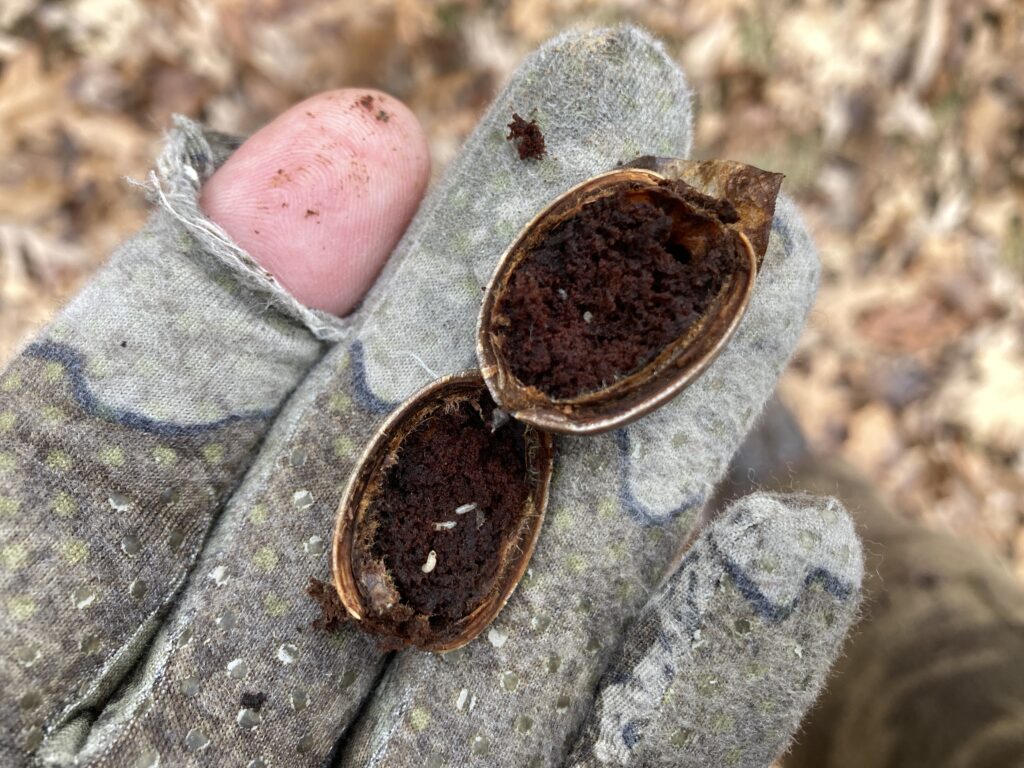
Northern PA’s acorn crop largely failed in 2021, possibly due to a late frost that killed the acorn flowers. Acorns remaining on the ground looked OK from the outside, but were all rotten like this on the inside. Wildlife is hungry and moving widely to locate food.
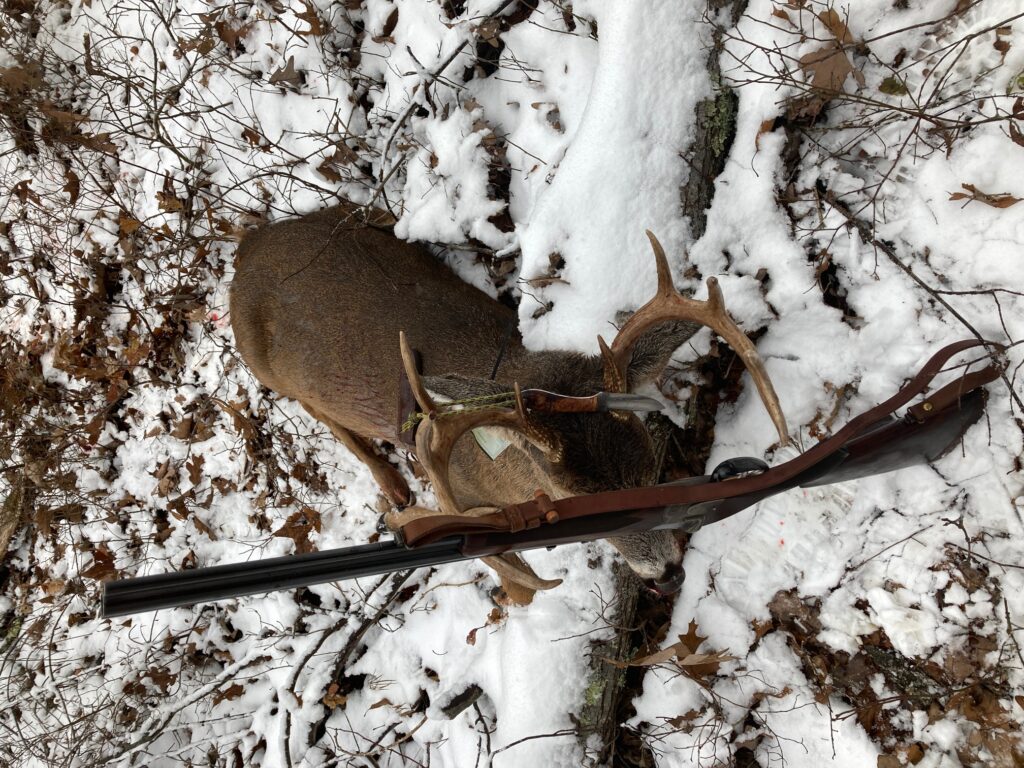
My “Freedom Buck,” killed on Sunday November 28th at 7:45am, on private property in PA. The ban on Sunday hunting is an attack on freedom, and so I named this Sunday morning buck after my declaration of freedom.
PA’s must-do 21st century deer management policy
When Gern texted me on November 12th “planning to plant the entire farm with grass next Fall… 100% hay… can’t afford to feed wildlife. Going broke trying to make money,” I knew that my best deer management efforts had finally failed over the past 13 years.
Every year I work hard to make sure our deer season is as productive as possible. Because our tenant farmer pays us a per-acre rent every year, which covers the real estate taxes and some building maintenance, and for 13 years he has grown soybeans, corn and hay in various rotations across the many fields we have. Our arrangement has generally worked out well both ways, but that text message ended my sense of satisfaction.
While I do wear dirty bib overalls when I run the sawmill and also when I try to impress people who don’t know me, Gern is the actual farmer who tills (broad sense), fertilizes, plants, and harvests a very large farm property in Dauphin County, some of which I own and all of which I manage. Our property is one of many that comprise about 30,000 acres of farm land that Gern and his family cultivate in Central Pennsylvania. To say that his family works hard is the understatement of all understatements. Gern embodies AMERICA! in flesh and spirit, and to see him so utterly beaten down by mere deer is heartbreaking.
Over the years I knew that both overabundant deer and bears were taking a significant toll on our grain crops (Gern’s primary source of family income), and so I worked hard to recruit the kinds of good hunters who would help us annually whittle down the herds, so that the pressure was taken off of our crops. About five years ago I proudly photographed one of our late-summer soybean fields, at about four super healthy feet high, indicating a minimal amount of deer damage. When I passed the soybean field pictures around to other farmers and land managers, nothing but high praise returned. And so I patted myself on the back for our successful deer management, and congratulated our guest hunters, who were killing about 25-35 deer a year on our property. Our hunters were filling an impressive 50% to 65% of the roughly 54 DMAP deer management tags we hand out every year, as well as some of their buck tags and WMU 4C tags.
But, change is life’s biggest constant, and while I rested on my hunting laurels, deer hunting changed under my feet. The past few years have seen a lot of change in the hunting world. First and biggest change is that hunters in Pennsylvania and other states are aging out en masse, with fewer replacements following them. This means that a lot less pressure is being brought to bear on the deer herd. Which means a lot more deer are everywhere, which is not difficult to see if you drive anywhere in Pennsylvania in a vehicle. There are literally tons of dead deer along the side of every road and highway, everywhere in Pennsylvania. We should be measuring this at tons-of-deer-per-mile, not just the number of dead deer and damaged vehicles. Frankly this overabundant deer herd situation is out of control not just for the farmers who feed Americans, but for the people who want to safely drive their vehicles to the grocery store. Hunters are sorely needed to get this dangerous situation under control, and yet Pennsylvania’s deer management policies favor overabundant deer herds to keep older hunters less crabby.
So, because I am about to break out the spotlights and AK47 to finally manage our farm deer the way they need to be managed (and yes, PA farmers are allowed to wholesale slaughter deer in the crops) (and yes, I feel the same way about our favorite forested places in the Northern Tier), here below is the kind of deer management/ hunting policy Pennsylvania needs via the PGC, if we are going to get the out-of-control deer herd genie back into its bottle and stop hemorrhaging farmland on the altar of too many deer:
- Archery season is too long. At seven weeks long, the current archery season lets a lot of head-hunters stink up the woods, cull the very best trophy bucks, and pressure the deer enough to make them extra skittish and nocturnal before rifle season begins. Even though rifle season is our greatest deer management tool. The same can be said of bear season, which is the week before rifle season. So shorten archery season and lengthen rifle season, or make the opening week of deer season concurrent with bear season, like New York does.
- Rifle season must be longer, and why not a longer flintlock season, too? Is there something “extra special” about deer come the middle of January, that they are prematurely off limits to hunting? Most bucks begin to drop their antlers in early February. Have three weeks of rifle season and then five weeks of flintlock season until January 30th, every year. Or consider flintlock hunting year ’round, or a spring doe season in May.
- More doe tags are needed. There are too few doe tags to begin with, and most doe tags sell out and are never used. This is especially true in WMUs 5C and 5D, where despite enormous tag allocations, tags quickly become unavailable. That is because individual hunters can presently buy unlimited numbers of doe tags, for some reason having to do with the way deer were managed in the 1980s…c’mon, PGC, limit of two or three doe tags for each hunter in these high-density WMUs, and at least two doe tags in Big Woods WMUs like 2G and 4C.
- Despite good advancements in reducing the regulatory burden on deer hunters this past season, there are still too many rules and restrictions. For example, why can’t our muzzleloading guns have two barrels? Pedersoli makes the Kodiak, a fearsome double percussion rifle that would be just the ticket for reducing deer herds in high deer density WMUs where the PGC says they want more deer harvests. But presently it is not legal. Another example is the ridiculous interruptions in small game seasons as they overlap with bear and deer seasons. This bizarre on-again-off-again discontinuity of NOT hunting rabbits while others ARE hunting deer is an unnecessary holdover from the long-gone, rough-n-ready bad old poaching days of Pennsylvania wildlife management. PA is one of the very few states, if the only one at all, with these staggered small game and big game seasons. Bottom line is hunting is supposed to be fun, and burdening hunters with all kinds of minutiae is not only not fun, it is unnecessary. Other states with far more liberal political cultures have far fewer regulations than Pennsylvania, so come on PA, give fun a try.
- Artificial deer feeding with corn, alfalfa, oats etc on private land during all deer and bear seasons must end. Not only does this “I’m saving the poor starving deer” nonsense lead to spreading deadly diseases like CWD, it artificially draws deer onto sanctuary properties and away from nearby hunters. Or it is baiting, plain and simple. Feeding causes overabundant deer to avoid being hunted during hunting season, but then quickly spread out on the landscape where they eat everything out of house and home when hunting season ends. This year up north (Lycoming and Clinton counties) is a prime example. We had no acorns to speak of this Fall, and whatever fell was quickly eaten up by early November. As the weeks rolled on through hunting season, the deer began leaving their regular haunts and unnaturally herding up where artificial feed was being doled out. This removed them from being hunted, and creates a wildlife feeding arms race, where those who don’t feed wildlife run the risk of seeing none at all. So either completely outlaw artificial feeding or let everyone do it, including hunters, so they can compete with the non-hunters. And yes, people who buck hunt only, and who do not shoot does, and who put out corn and alfalfa etc. for deer during hunting season, are not really hunters. They are purposefully meddling in the hunts of other people by trying to keep them from shooting “my deer.”
- PGC must better communicate to its constituency that too many deer result in unproductive farms that then become housing developments. Because the landowner and farmer must make some money from the land, if farm land can’t grow corn, it will end up growing houses, which no real hunter wants. So real hunters want fewer deer, at numbers the land and farms can sustain.
PA’s new Sunday hunting in review
Notify the media: Sunday hunting in Pennsylvania did not throw Planet Earth off of its orbit, did not cause mass extinctions, did not cause entire animal populations to mass migrate by stampeding for the border in search of a day of rest or respite from bloodthirsty hunters, did not cause church attendance to drop across the state, and did not result in the skies opening up with fiery hail and brimstone.
Truly, I am sorry to be a smart ass about this subject, but for God’s sake did we ever unnecessarily debate and fight about this ridiculous subject for twenty years or more. And now that people are hunting for bear and deer on Sunday in Pennsylvania….there is literally nothing to write about. Nothing bad happened. Hell, nothing happened. I mean, like nothing occurred. Hardly any animals were killed on any of the Sundays we now can hunt.
All of that gnashing of teeth, the wailing, the silly dramatics that caused this essential personal freedom to be unfairly withheld from Pennsylvanians while the rest of the country happily hunts on Sunday…and now what? We see it isn’t the end of the world as we were told it would be. It is barely discernable from the middle of the week, except that most of us work in the middle of the week, and only have time to hunt on weekends.
If we expand Sunday hunting further, like all of the states adjoining Pennsylvania have, will the silly dramatics happen all over again? I can hear it now “No more freedom for you!” as we show with real-time data that Sunday hunting has not ended our civilization or resulted in hikers’ bodies piling high. So far, we didn’t even pile any animals’ bodies high on Sundays.
Well, one comfort we can take is that at least the people against Sunday hunting finally have some political chums they can run with: All the totalitarian governors who have used the never-ending CCP covid19 virus emergency to toss the US Constitution overboard while they tighten their grip on the private home gatherings of Americans while simultaneously jetting off to their own fancy mask-less wine-and-dine soirees, they also love them some big government anti freedom policies….but heck, now come to think of it, even these totalitarian governors (Cuomo – NY, Newsom – CA, Wolf – PA et al) support Sunday hunting.
Makes ya wonder and realize just how totalitarian and anti-freedom the anti-Sunday hunting folks actually are.
So far this year in Pennsylvania, Sunday hunting has been a big day of….quiet. The deer archery season Sunday did not seem to result in a mass slaughter of deer. Last week’s Sunday bear hunting day resulted in about the same number of deceased bears as the following Monday, both of which being dramatically less than the take on Saturday. And tomorrow, being the first firearms deer Sunday hunting day, is probably going to be a lot like today was….just about dead silent, with very few rifle shots heard anywhere in all of the counties I have checked in. If I am wrong about this, and tomorrow turns out to be the much advertised human bloodbath and bloody orgy that antis squealed about, then I will eat my shorts.
But I know where those shorts have been, and I don’t plan on eating them. I am quite certain that tomorrow we will hear some shooting here and there, probably the same as today, today being the freaking opener for God’s sake, a day when there should have been massive shooting non-stop. Which is to say, a lot of the excitement about hunting and hunting camp has been bled out of the hunting population by the SATURDAY opener. Sunday has nothing to do with it. In fact, it seems that though it is now legal, Sunday has very little to do with hunting, at all.
One. Big. Yawwwnnnn.
And that is the beauty of having individual freedom. Sometimes people don’t really exercise it, because of personal choice. Something I read about America and all, long ago…
UPDATE, NEXT DAY: So this Sunday morning while on stand, I counted a grand total of seven shots between 7am and 11:30am. Three were fairly close, like within a mile, and the other four were distant. To those who do not hunt, this is a very, very small number of shots, especially on an opening weekend. No big bloodbath this Sunday hunt. You could much more commonly listen to your neighbors blow off a thousand rounds of semi auto on a Sunday morning, as I did last weekend. Me personally, I find a handful of scattered shots over a five hour period to be fairly representative of rural PA, and more desirable than listening to people protest Sunday hunting by trying to create an enormous racket that really does disturb peoples’ Sunday rest.
While I had deer around me, including two nice bucks sparring with each other, which is cool as heck, I had no good shots. And so as the opponents of Sunday hunting demanded of me and all others they wished to command, I spent my Sunday morning in silent contemplation, prayer (mostly for America and the peaceful resolution of the current election fraud crisis), and deep reflection. But with a rifle across my knees. To me the whole experience has been a win-win, and a truly American opportunity based on my own personal free choice.
